Catalyzing communities for global solutions
FY2023 Annual Report
July 1, 2022 – June 30, 2023
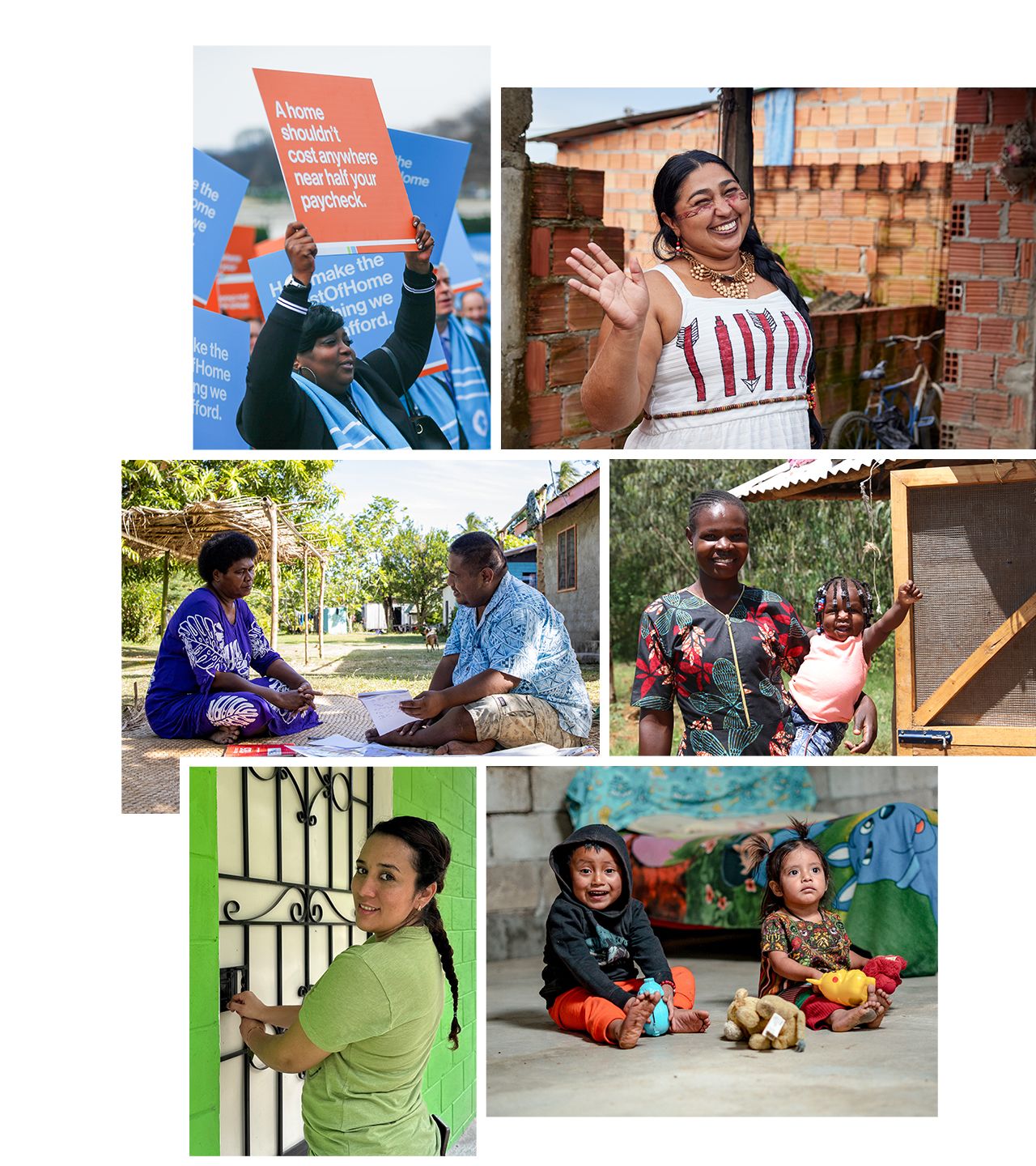
We live in a world where billions of people lack access to a decent, affordable home. This crisis affects every region.
There is no simple solution, no one action that can solve the global housing crisis.
Addressing the need requires commitment, dedication and deep understanding of the complexities of the world’s housing ecosystems. Habitat for Humanity has spent more than four decades building and repairing homes, partnering with families to create housing that has changed lives.
Building affordable homes is a vital part of addressing the housing crisis. Our work, however, extends far beyond the build site. Significant need requires significant response.
We convene residents and partners and work in coalition to strengthen neighborhoods and communities. We actively advocate at the local, national, regional and global levels for policies and systems that improve access to affordable housing. We facilitate partnerships among and provide vital expertise to market actors who shape housing systems.
We build, we train, we innovate, we invest — all with your support.
In your community and in communities around the world, we tirelessly pursue a future where no matter who you are or where you come from, you can have a decent, affordable place to call home.
Since 1976, Habitat has helped more than
59 million people
build or improve the place they call home.
13.4 million+ people
built or improved the place they call home with Habitat's help in FY2023.
9.5 million+ people
gained the potential to improve their housing conditions through our training (131,323) and advocacy (9,417,063) this year.
895,000+ volunteers
helped build, advocate and raise awareness about the global need for shelter in the past fiscal year.
Designing sustainable homes in response to climate change
In fiscal year 2023, Habitat El Salvador built two eco-friendly homes certified for one of the most rigorous international standards that recognizes buildings with a low environmental impact. Green Business Certification Inc., an independent credentialing organization, awarded Habitat El Salvador its Excellence in Design for Greater Efficiencies certification.
The energy-efficient homes, designed in partnership with researchers from the University of Seville in Spain, were built through Vivienda Verde, Habitat El Salvador’s sustainability program that launched in 2015 to help families improve their resilience to climate change.
El Salvador is in Central America’s Dry Corridor, a high-risk area prone to erratic weather events like prolonged droughts and excessive rains. Climate change has a cascading effect in the region. These unpredictable weather patterns contribute to food insecurity, poverty, and in some cases, migration. “We are seeing the struggles families face with extreme weather events,” says Gino Caballero, Habitat El Salvador’s disaster risk management coordinator. “That’s why we’re incorporating adaptations to our houses to help protect families from climate change.”
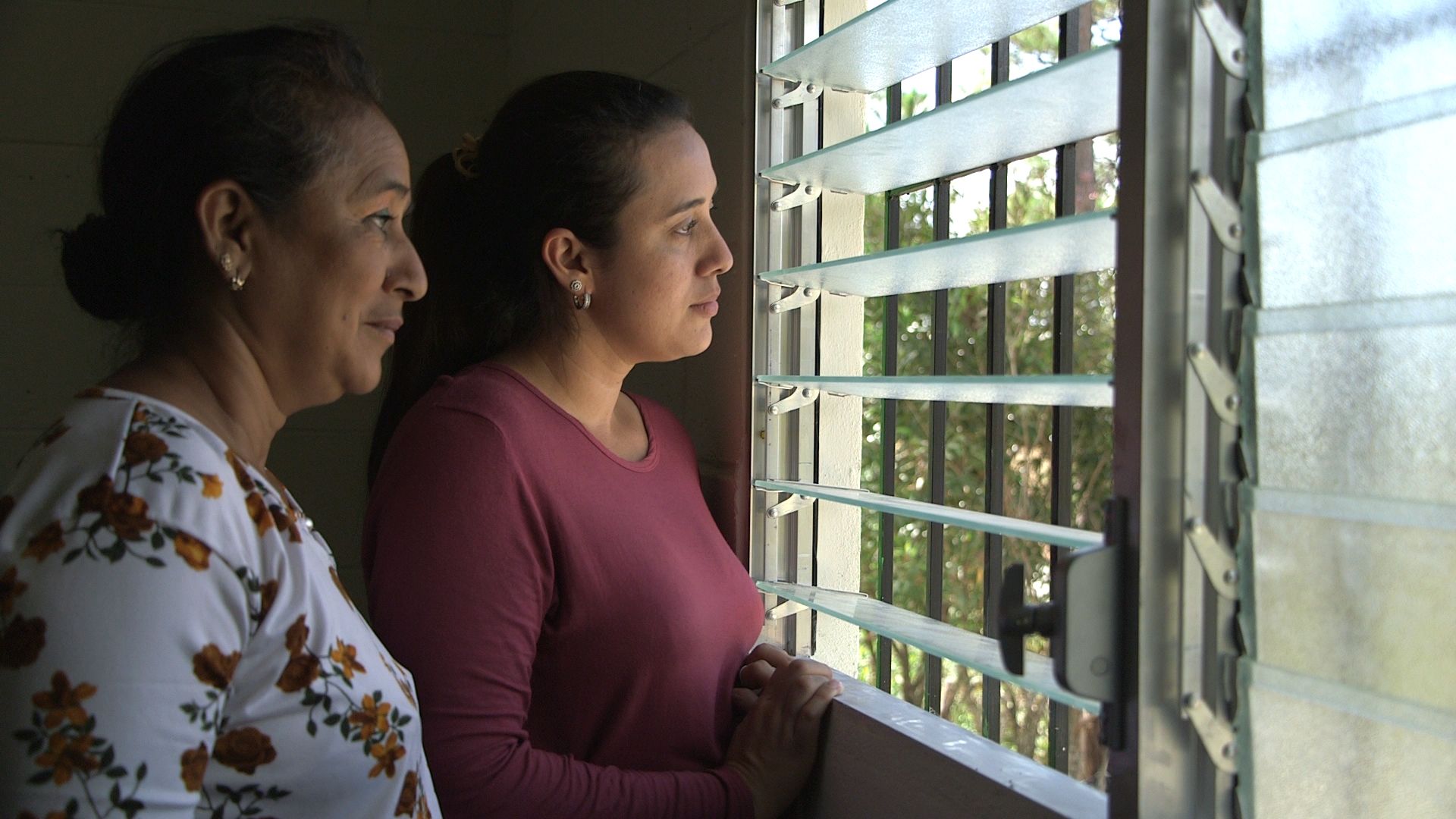
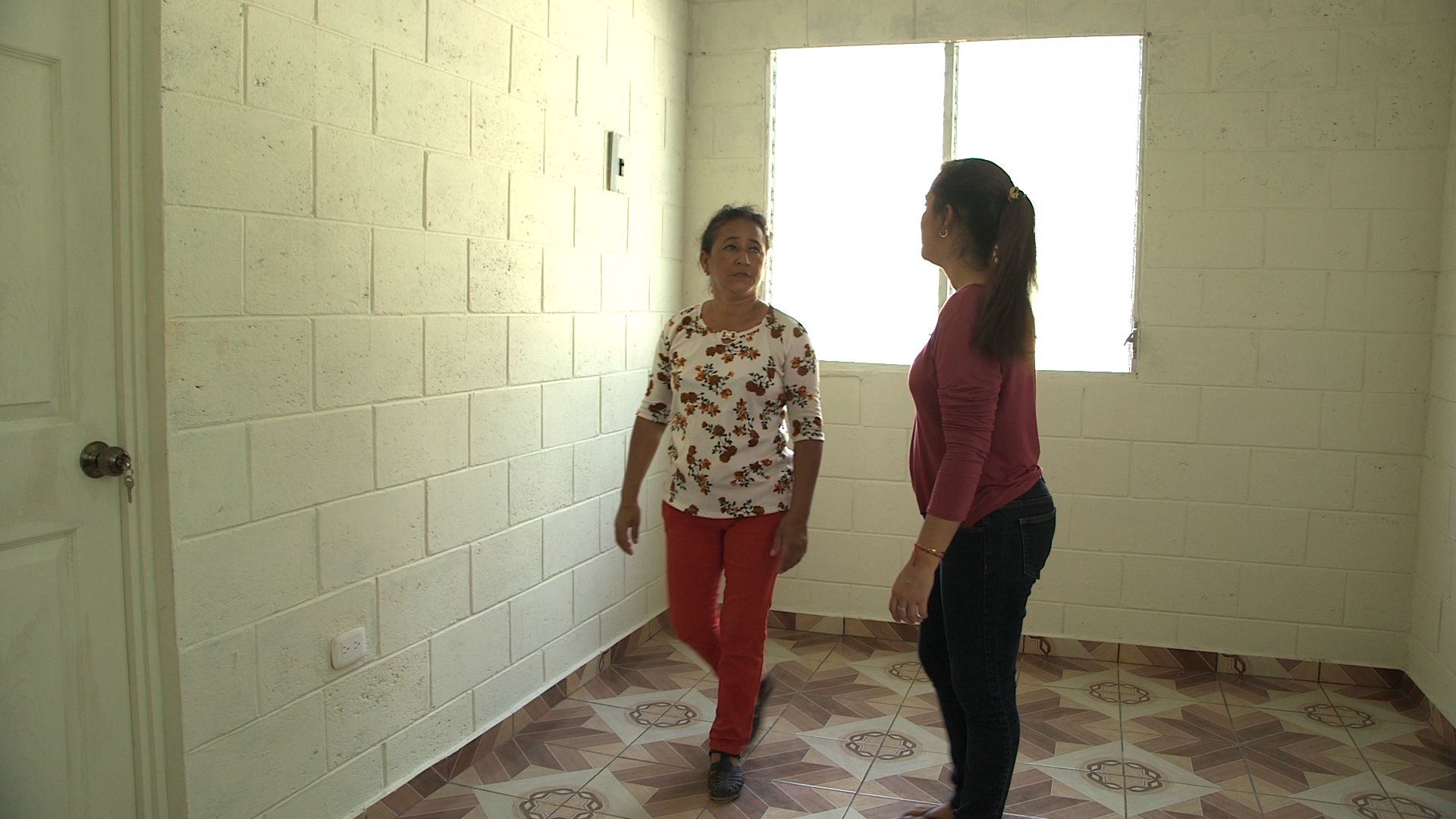
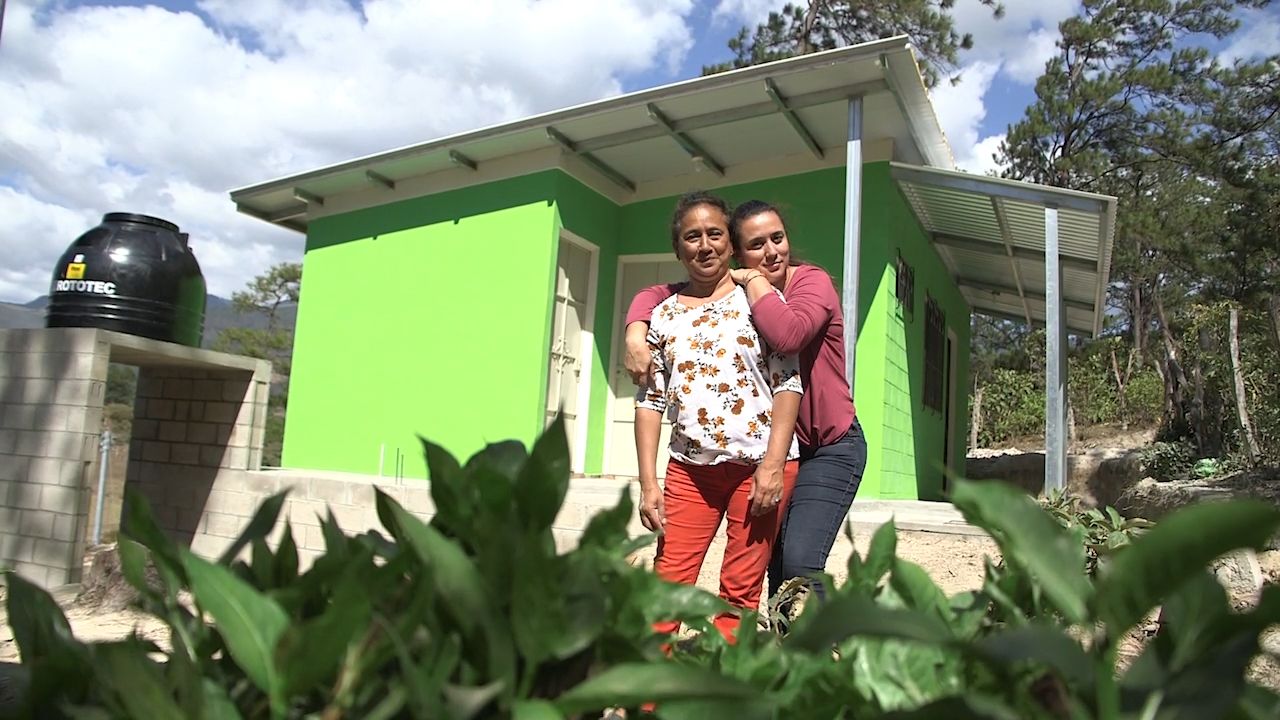


Habitat El Salvador’s two EDGE-certified homes achieved energy savings of 60%, water savings of 21% and construction material energy savings of 79%, exceeding the 20% minimum threshold required across each category for certification.
The homes include large windows to improve ventilation and natural light, a solar energy collection kit that generates clean and renewable energy, a rainwater harvesting system to collect and store clean water, and an efficient water system that uses low-flow showerheads and faucets. Ceiling fans in each room and an insulated thermoacoustic roof help keep indoor temperatures comfortable. Habitat El Salvador also built the homes to be more earthquake-resistant by using wider, stronger bricks.
Mayra Carolina and her mother, Maira, partnered with Habitat El Salvador to build their EDGE-certified energy-efficient home in La Palma. The family was active throughout the construction and moved into the home in February 2023.
Mayra Carolina says living in a home that lowers their energy bills and limits their environmental footprint means the world. “Building more green homes would change our society, the planet and humanity,” she says.
Habitat El Salvador is adapting their EDGE-certified home design with cost-effective modifications to enable them to build more eco-friendly homes. “We have a real opportunity to create a new standard of sustainability in our homebuilding,” Gino says.
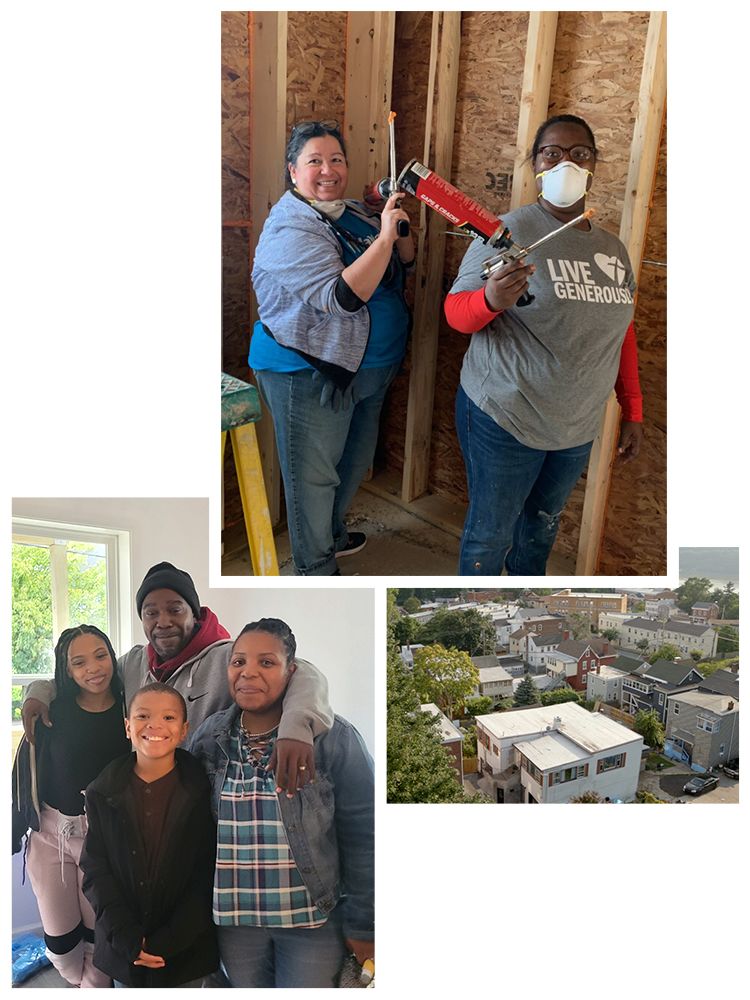
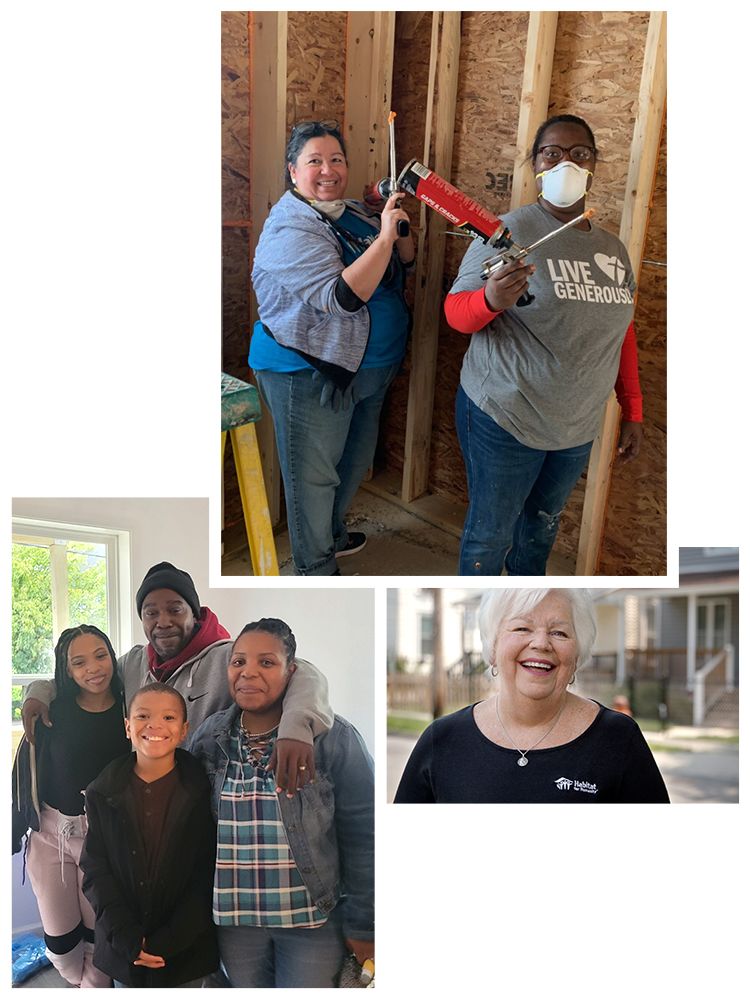
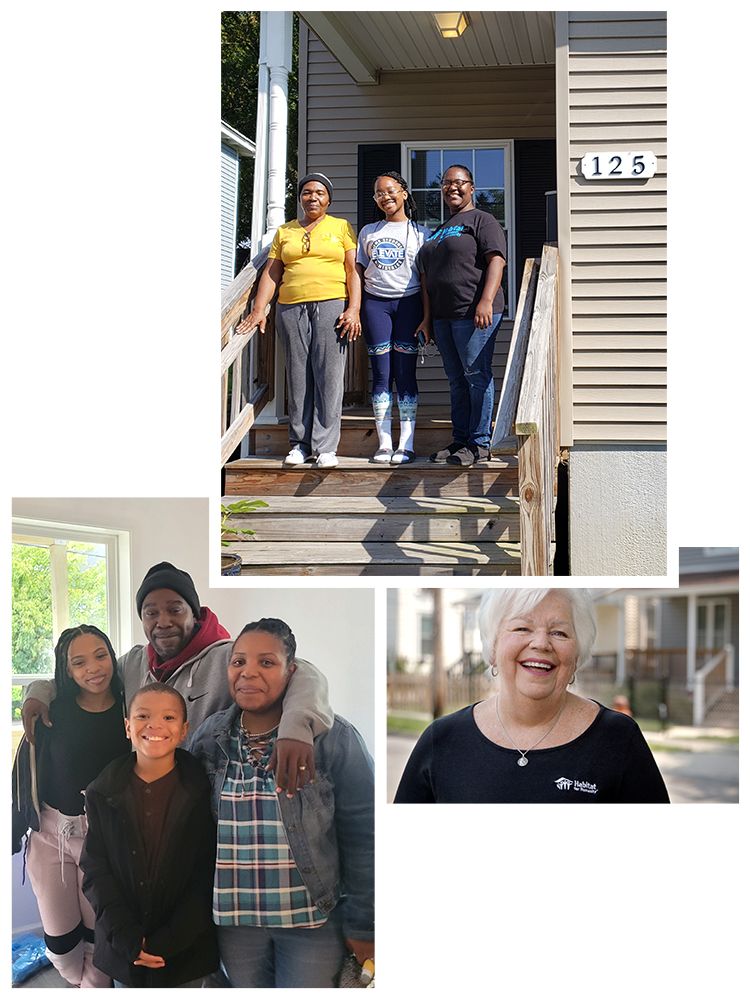
Helping close the homeownership gap in New York through mortgage readiness
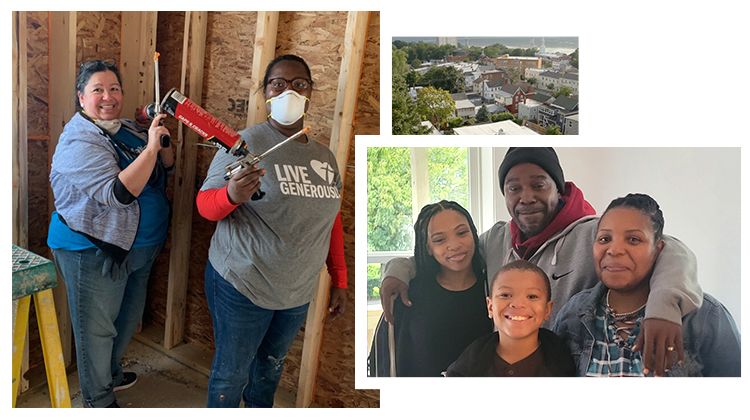
In the U.S., systemic barriers, restrictive racial covenants, exclusionary zoning, predatory lending, and more, have kept Black families from unlocking the intergenerational wealth-building potential of homeownership. Through Habitat’s Advancing Black Homeownership initiative, we are working to dismantle the exclusionary race-based systems and racial biases that have prevented Black families from equitably accessing homeownership opportunities.
Habitat affiliates across the country have made the pursuit of racial justice in housing a core component of their work. Habitat Dutchess County provides an example of this localized and targeted approach.
In September 2022, the New York affiliate found that just 1 in 25 Black families who applied during their recent application period were accepted to their homeownership program. The others did not qualify financially to own a Habitat home. This demographic data inspired Dutchess County to shape Homeward Bound, a program that helps prepare prospective Habitat homebuyers for mortgage readiness.
Program participants receive financial counseling and create individualized action plans that help them build savings, improve credit, reduce debt and more.
“We didn’t want to be another organization that just said no. Once you say no, it discourages people from coming back. Just because you don’t qualify to be in the homeownership program yet doesn’t mean that we need to shut the door for you. Homeward Bound is keeping that door open and providing support.”
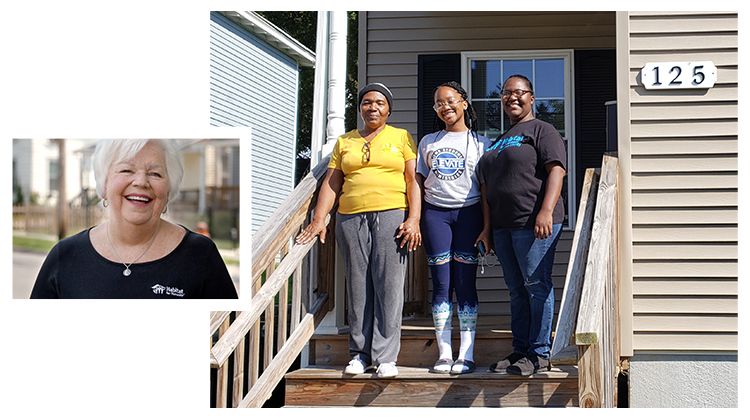
Half of the prospective homebuyers who have joined Homeward Bound since the program’s launch identify as Black. Habitat Dutchess County is increasing their community outreach efforts in predominantly Black communities in Poughkeepsie, New York, to encourage even more participation in Homeward Bound to start the path to homeownership.
To help speed their momentum, Habitat for Humanity International recently awarded Habitat Dutchess County a federal capacity building grant that will allow the affiliate to hire a staff member specifically dedicated to expanding these community outreach efforts and growing the pipeline of mortgage-ready Black families.
Maureen Brennan Lashlee, Habitat Dutchess County’s chief executive officer, says the affiliate meets residents where they are and takes a listen-first approach to better understand the needs of the community. “We don’t know what we don’t know,” she says. “That’s why what Habitat is doing right now is so incredibly important. We’re reaching out to the Black community and asking, ‘How can we do this better?’”
Women leading WASH in Fiji
Habitat Fiji and Habitat Australia concluded a multiyear project in fiscal year 2023 that helped strengthen and empower gender-inclusive water, sanitation and hygiene committees in remote communities in Fiji where many residents experience water insecurity exacerbated by climate change. Habitat Fiji worked with water and health committees to reach more than 5,000 people across 18 communities.
Many residents in remote communities in Fiji rely on rainwater as their primary water source. In recent years, however, the effects of climate change have increased water shortages.
Tevita Senico, Habitat Fiji’s WASH officer, says water committees were previously ineffective and typically consisted of one or two men addressing the community’s water needs on a reactive basis. Women, who tend to carry the burden of collecting water for their households, were excluded from or underrepresented on water committees.
In 2018, Habitat Australia and Habitat Fiji partnered to improve WASH efforts in Fiji through Water for Women Fiji, a project they codesigned, funded by the Australian Government's Department of Foreign Affairs and Trade.
Water for Women Fiji facilitated gender-inclusive WASH trainings to reshape community behaviors around WASH, raise awareness of sanitation and hygiene, and address barriers preventing women from participating in water committees. Representation of women in water committees jumped from 21% to 41% as a result of Habitat’s engagement and behavioral change work.
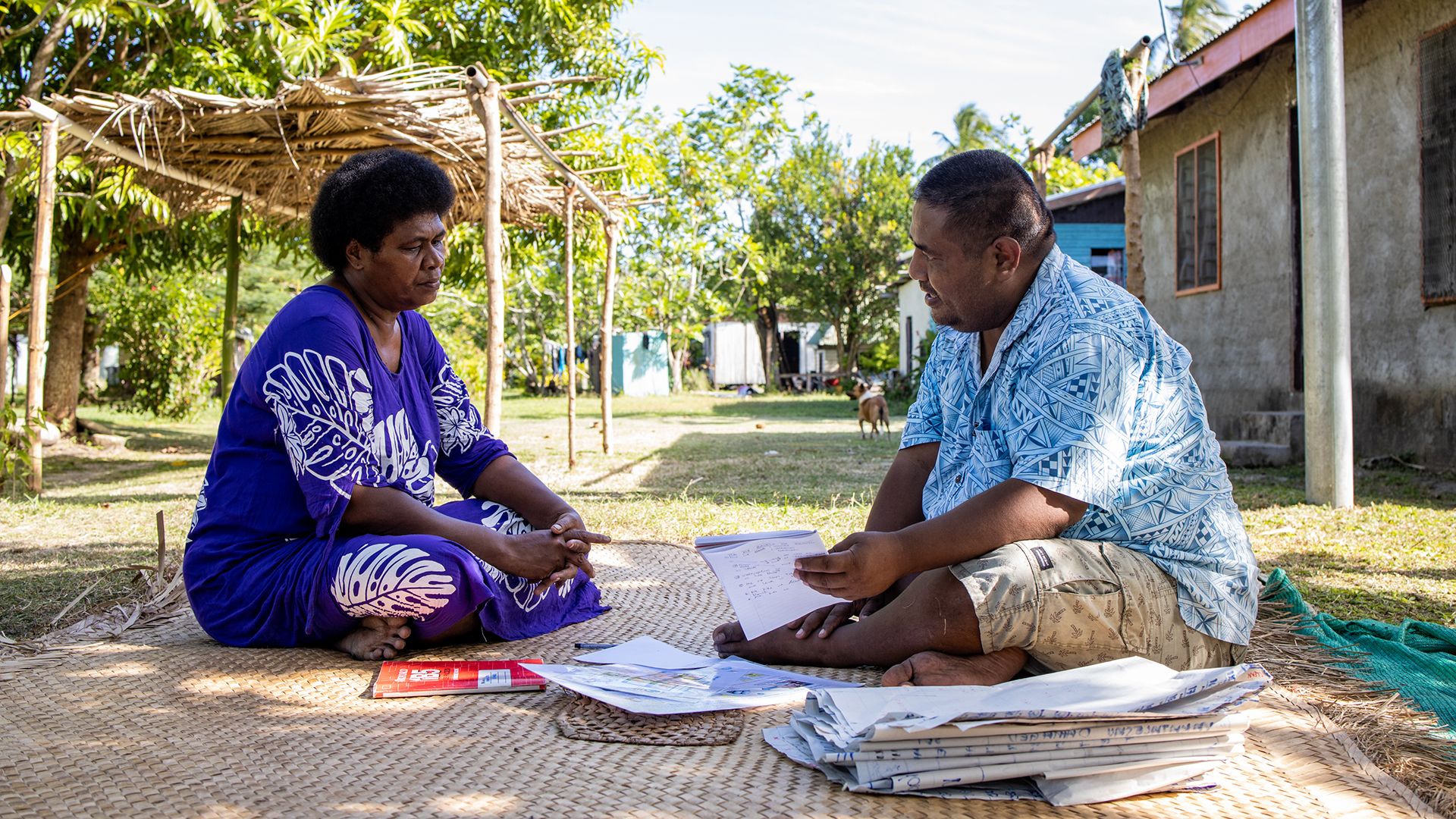
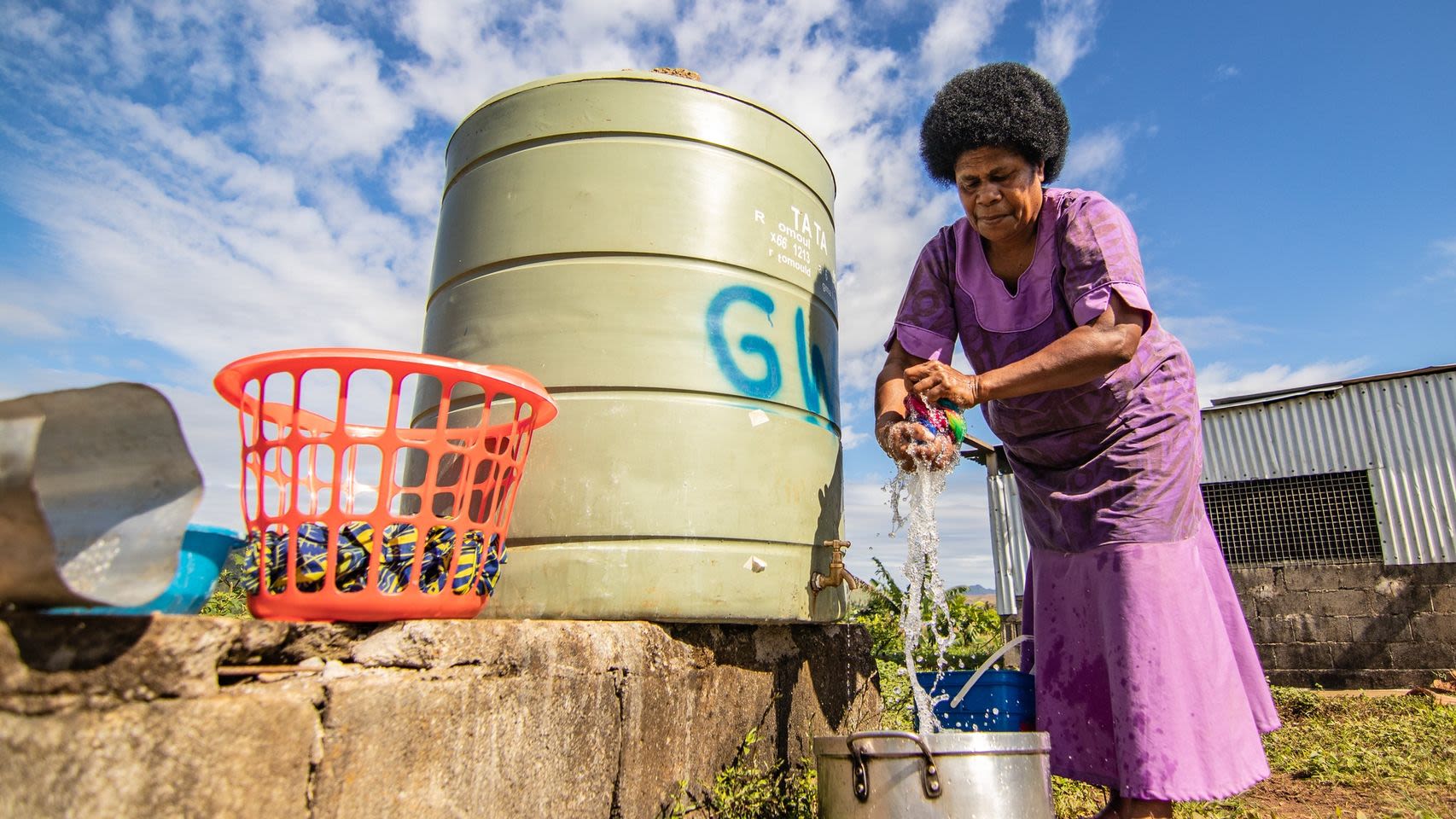
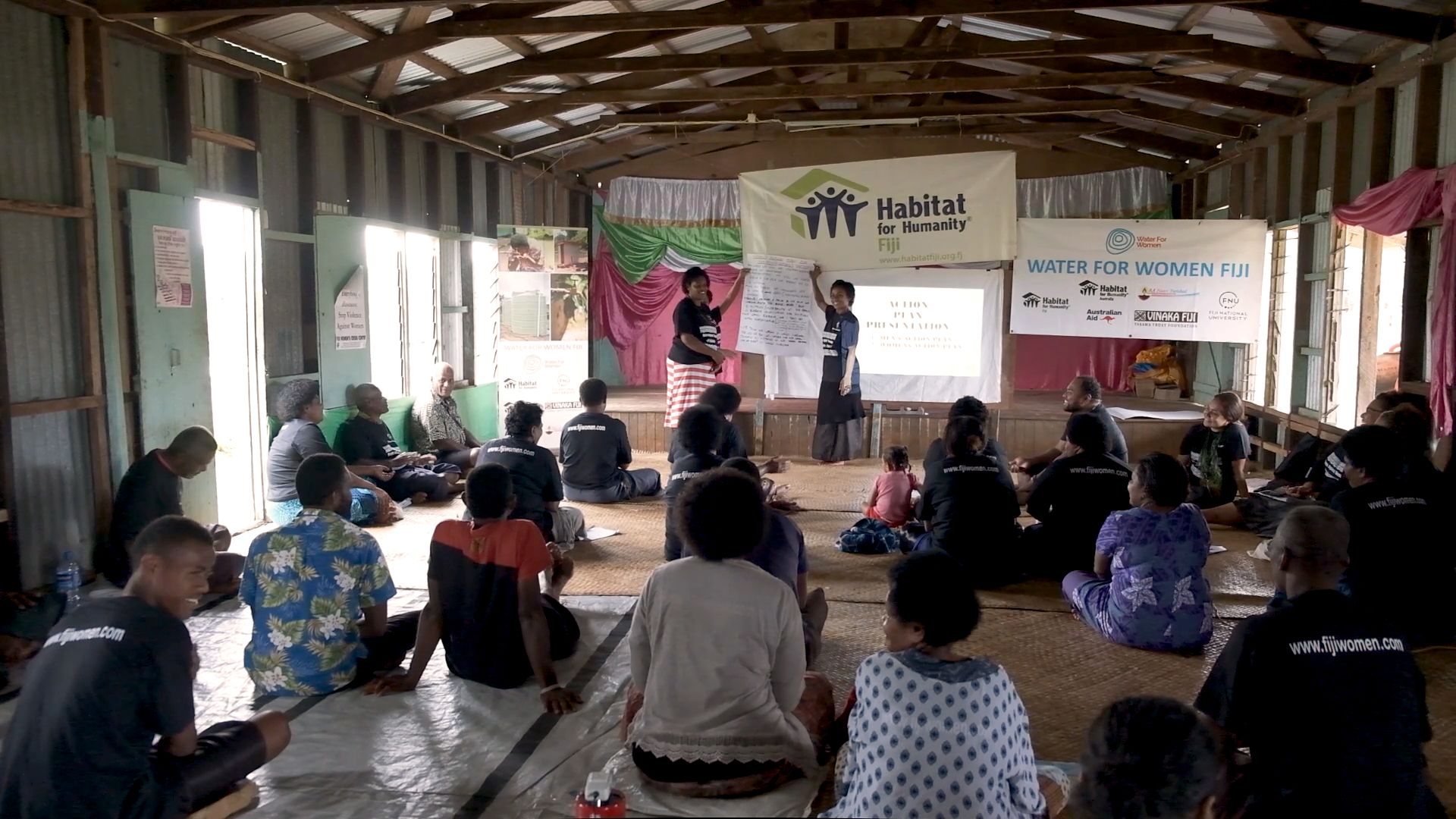
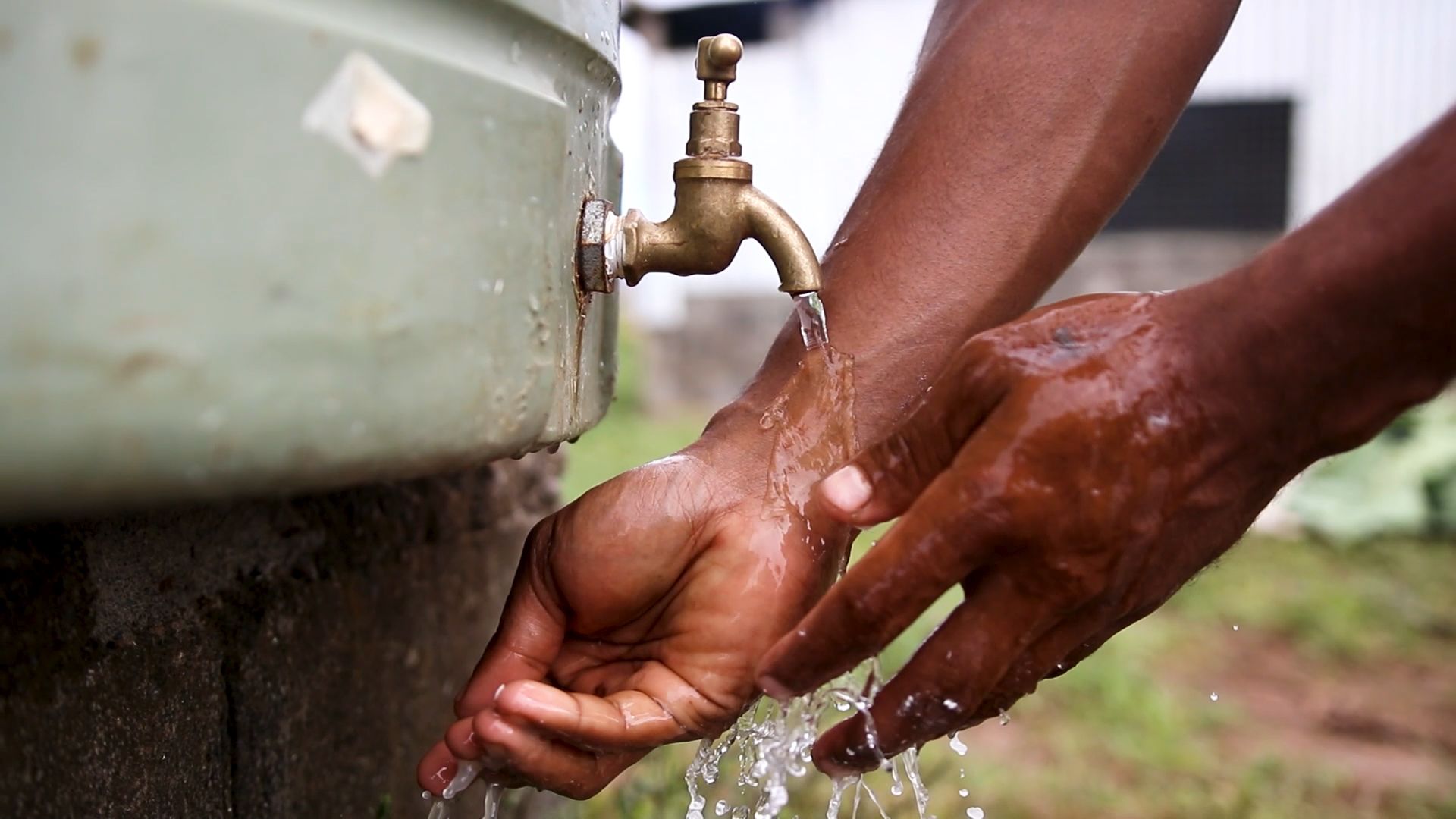



Additional Habitat-led technical trainings helped water committees treat unsafe drinking water, fix pipeline leaks, conduct community water audits, collect household WASH data and write proposals to the government for WASH-related assistance.
Sainiana, a retired nurse who took up a leadership role on her local water committee in Burenitu village, used tools from the Habitat trainings to seek donor support to improve her community’s water piping system. Pointing to data collected by the committee, Sainiana applied for and received funding from the New Zealand High Commission to upgrade her community’s reticulation system.
Across Ba and Ra provinces, water committees began using new water-purifying techniques like SODIS, a simple solar disinfection method that kills bacteria in untreated water. Since employing SODIS, communities have reported no new cases of diarrhea or typhoid — two deadly waterborne diseases, especially among children.
The project included a delivery of infrastructure, with communities and schools installing or upgrading toilets and constructing rainwater harvesting systems, repairing and improving existing water systems, and more. The infrastructure projects improved WASH services and illustrated the tangible changes possible with a participatory, inclusive water committee.
Tevita says Habitat’s Water for Women project has had a catalytic effect and inspired international partners to fund new Habitat WASH projects. In fiscal year 2024, for example, Habitat Fiji will use funding from the Japanese Embassy to install a 10,000-liter water storage tank, reticulation system, community toilets and other WASH facilities in Lumiboso village.
In Fiji and around the world, Habitat advances health outcomes, economic opportunities and gender equality through sustainable and integrated housing and WASH solutions.
Strengthening energy efficiency amid the war in Ukraine
Habitat for Humanity is partnering with local housing experts amid the war in Ukraine to provide urgent in-country energy upgrades. Habitat helped modernize 10 buildings in 2023, enabling 1,000 households in Odessa, Ukraine, to stay warm in the winter while reducing their energy costs by 25%.
Much of the housing stock in Ukraine — like elsewhere in Central and Eastern Europe — consists of Soviet-era, large-scale buildings that aren’t energy efficient. These aging residential blocks force families to pay a high share of their income on utility bills, especially in the winter and summer months when energy needs and costs skyrocket.
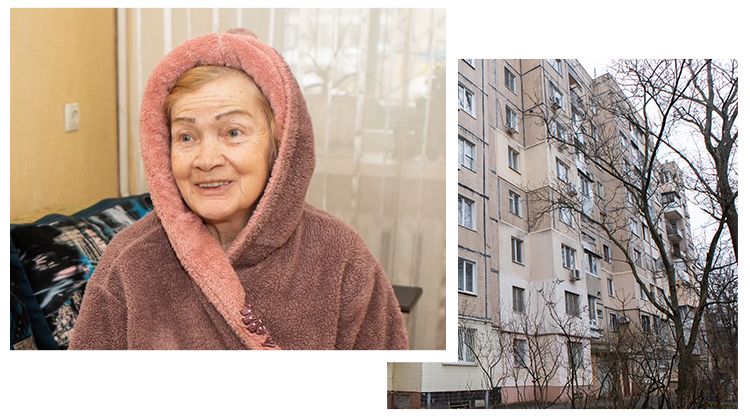
The onset of the war in Ukraine in February 2022 made matters worse. The war triggered a global energy crisis and caused household energy costs to soar. Missile strikes brought frequent power outages and left heating sources inoperable for many during the winter months. “It was colder than ever in my apartment,” says Lydia, a 75-year-old Odessa resident. “I slept dressed in a coat.”
Since 2009, Habitat has improved residential energy efficiency in hundreds of apartment buildings across Central and Eastern Europe, helping thousands of homeowners like Lydia save money and live more comfortably. Habitat began this work in Ukraine in 2020 when we partnered with Odessa Housing Union.
Habitat’s existing partnership with Odessa Housing Union and our financial and technical support have enabled us to upgrade weather-regulated heating systems, insulate ceilings and install individual heating substations in 10 multiunit buildings across the city.
Habitat and Odessa Housing Union also have modernized basements within the upgraded apartment buildings to function as places residents can shelter during air raid warnings and bombings.
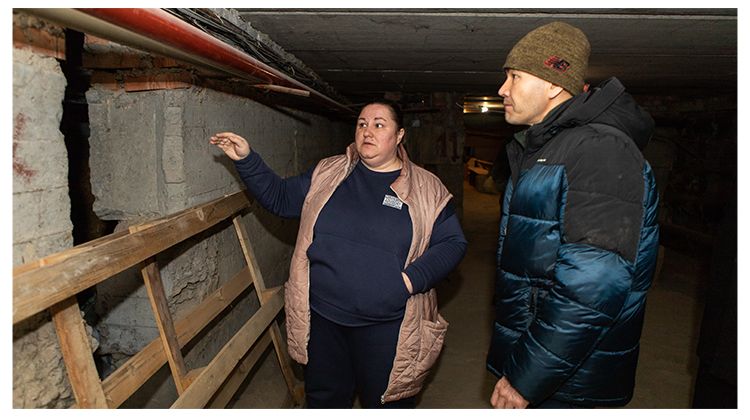
Ludmila remembers the fear of seeing a missile destroy a nearby high-rise apartment in the early days of the war. She discovered Habitat and Odessa Housing Union’s retrofitting work through a television ad and reached out. Odessa Housing Union finished upgrades in her building in the spring.
Habitat’s energy-efficiency work in Ukraine is continuing to help us reach more people affected by the war. By April 2024, Habitat and Odessa Housing Union will modernize 24 additional buildings, improving the energy security of 2,400 people.
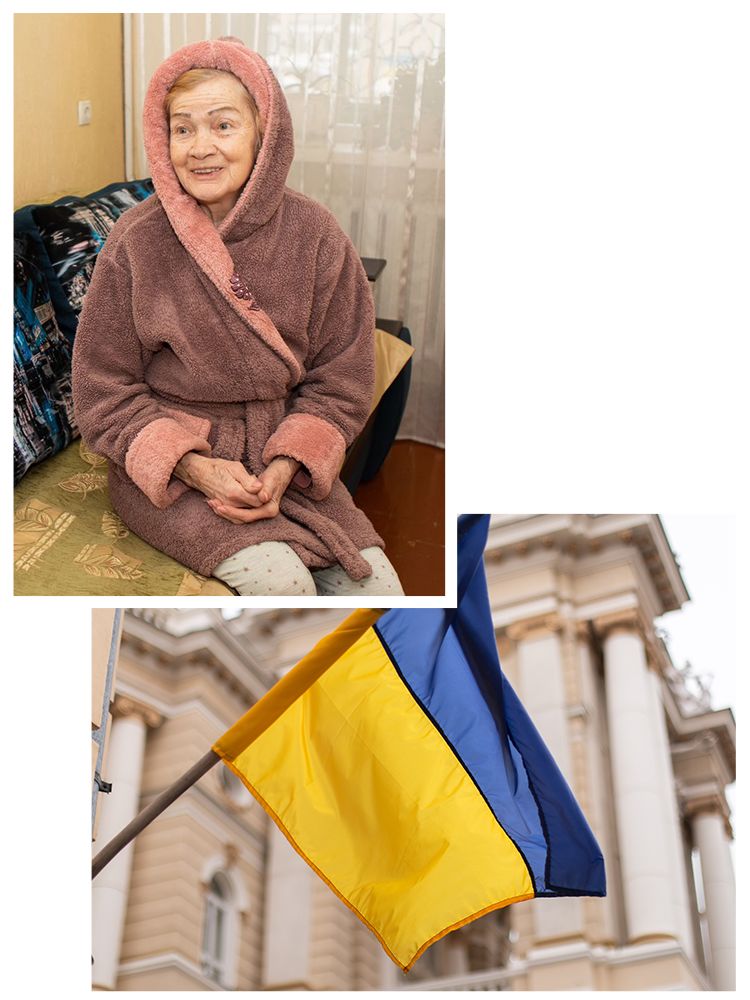
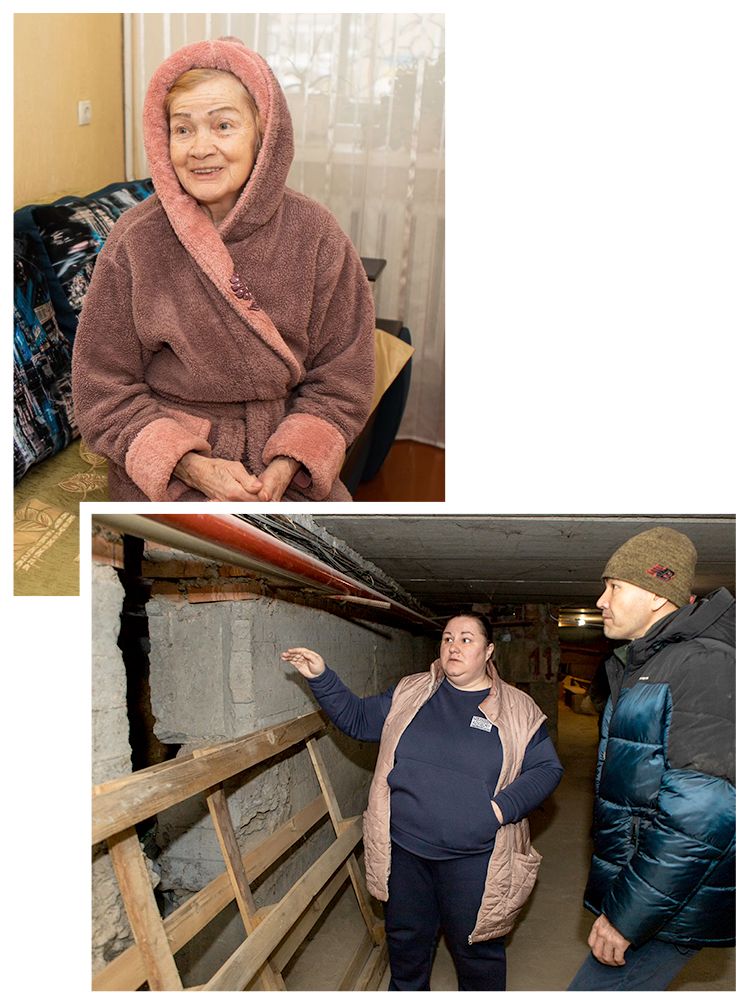
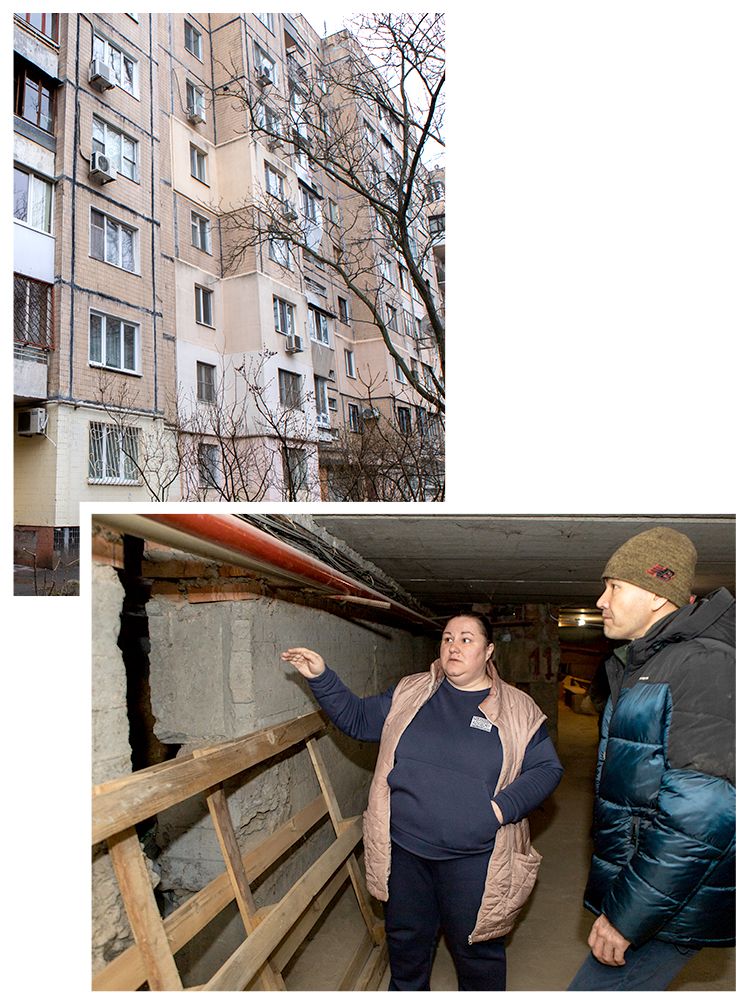
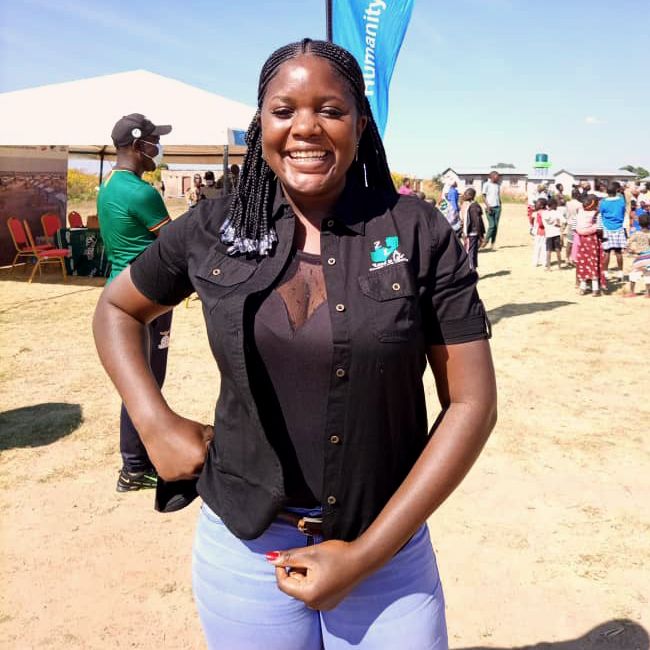
“My experience as a volunteer has been quite rewarding as I have gained a lot of knowledge in community work and the empowerment of vulnerable communities. Being able to support community members has been satisfying and has motivated me to continue doing humanitarian work.”
Chileya Chiwele is a volunteer with Habitat Zambia.
Improving health by mosquito-proofing homes in Kenya
Most malaria infections begin at home, while families sleep. But a 2023 randomized control trial by Habitat’s Terwilliger Center for Innovation in Shelter with 40 families in rural Kenya showed that simple, affordable upgrades could significantly reduce mosquitoes’ entry into homes.
There were an estimated 247 million cases and 619,000 deaths from malaria in 2021. Nearly all the harm — 95% of infections and 96% of deaths — occurred in sub-Saharan Africa, where mosquitoes thrive in hot, tropical climates.
For decades, families in the region have used mosquito-resistant bed nets to help protect against malaria. However, the nets easily trap heat and can create unbearable sleeping conditions. Increased average temperatures due to global warming have made the issue worse. While opening windows and doors may allow cooler air in, it also gives mosquitoes more entry points into the home.
The Terwilliger Center’s efforts to address malaria through housing began in 2021, with a global challenge to crowdsource design solutions for home-based malaria prevention and thermal cooling. A panel of health and housing experts selected one solution for field testing in Kenya, the project’s target area.
Most homes in rural Kenya lack the proper screens to keep mosquitoes out.
“Housing is more than just a structure. We have to ask these important questions: ‘Will your house keep you healthy? Will your house keep you free from malaria?’”
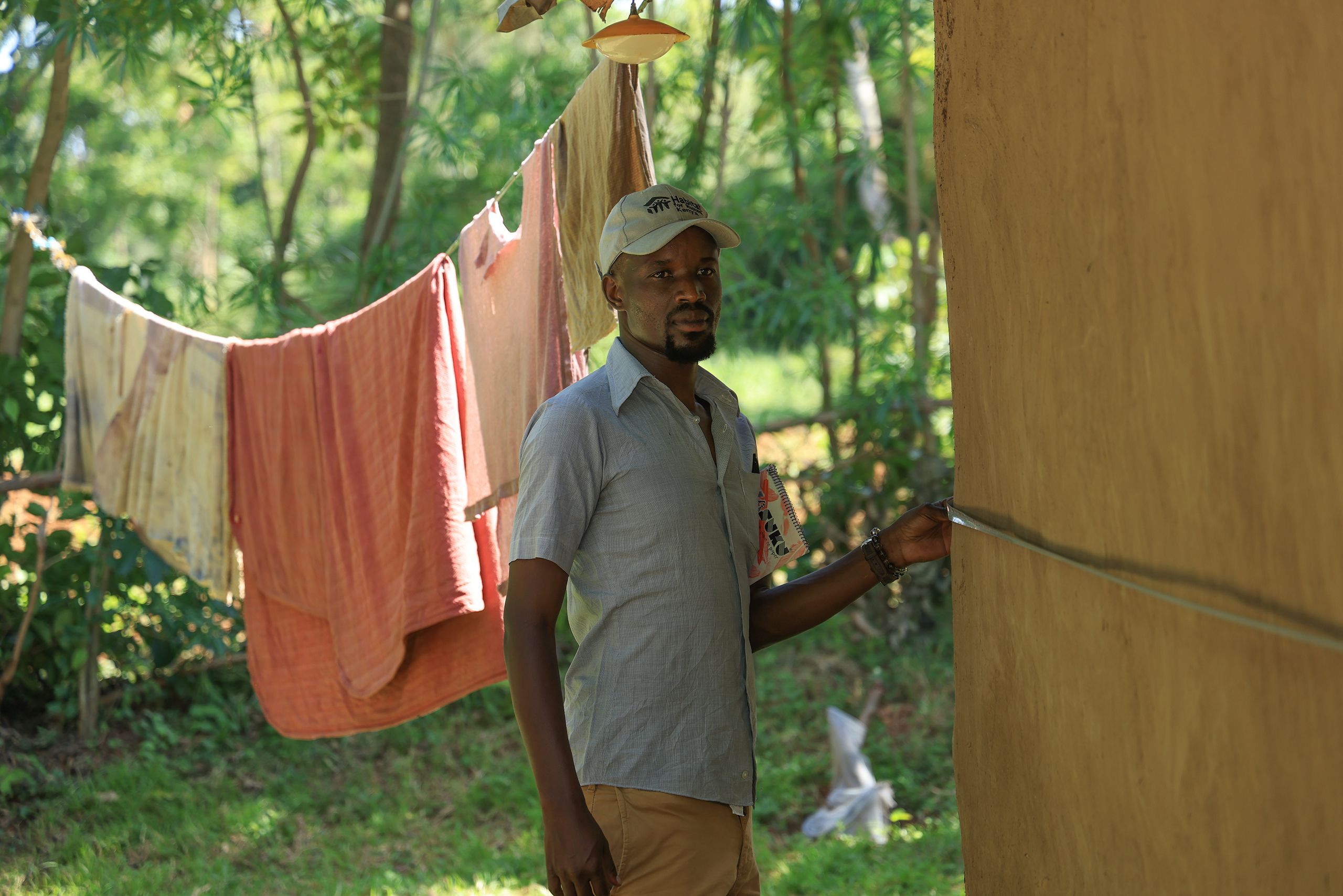
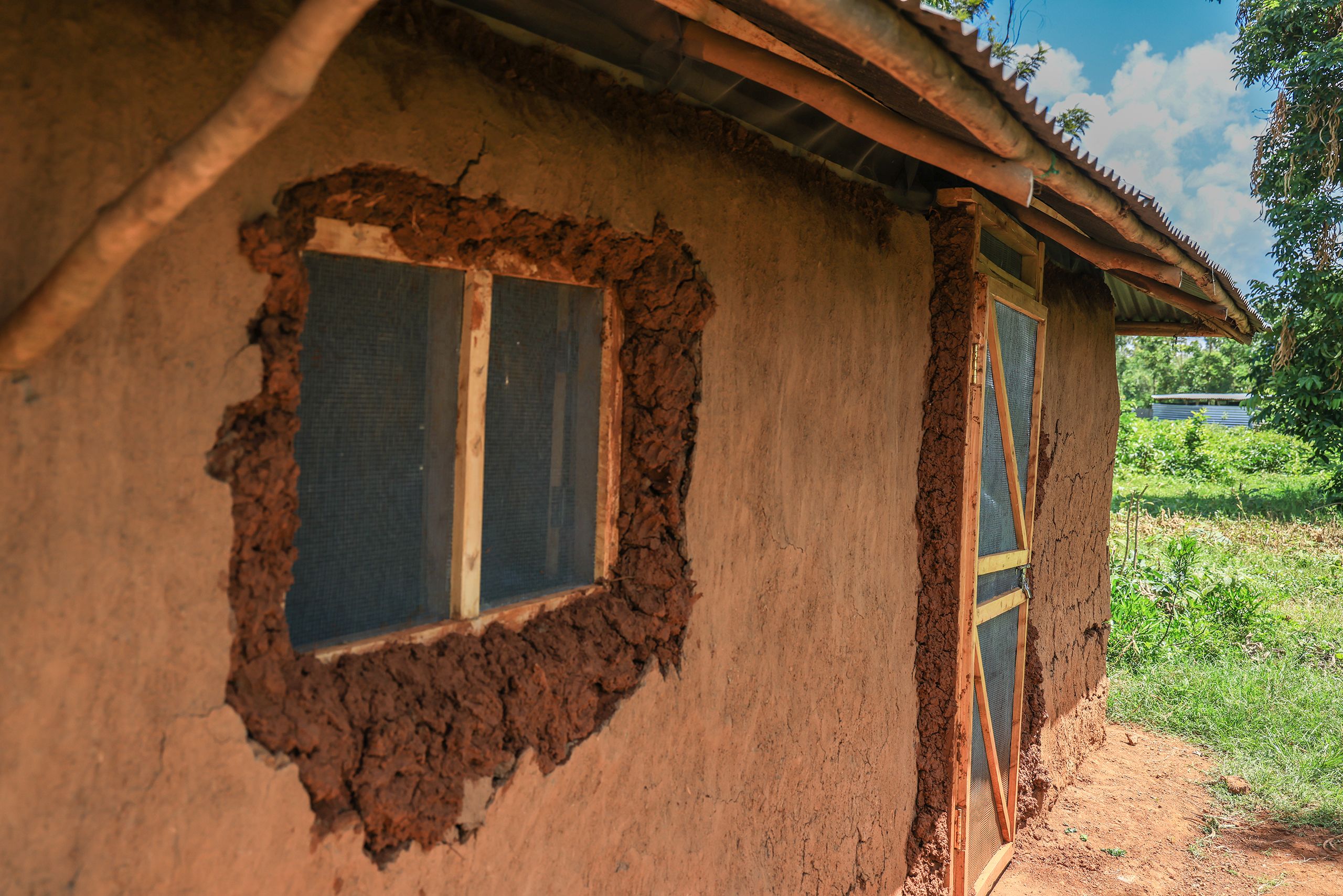
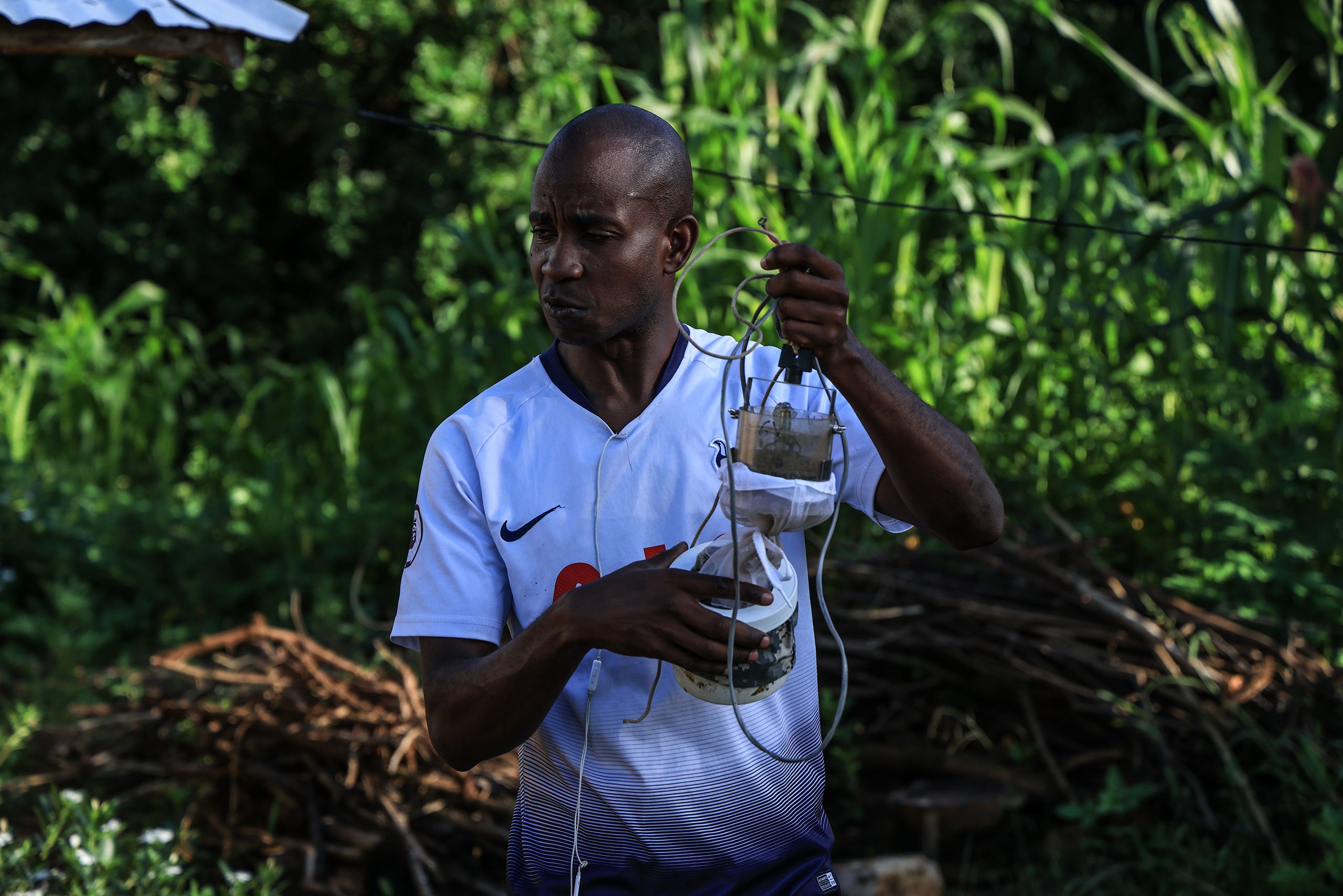
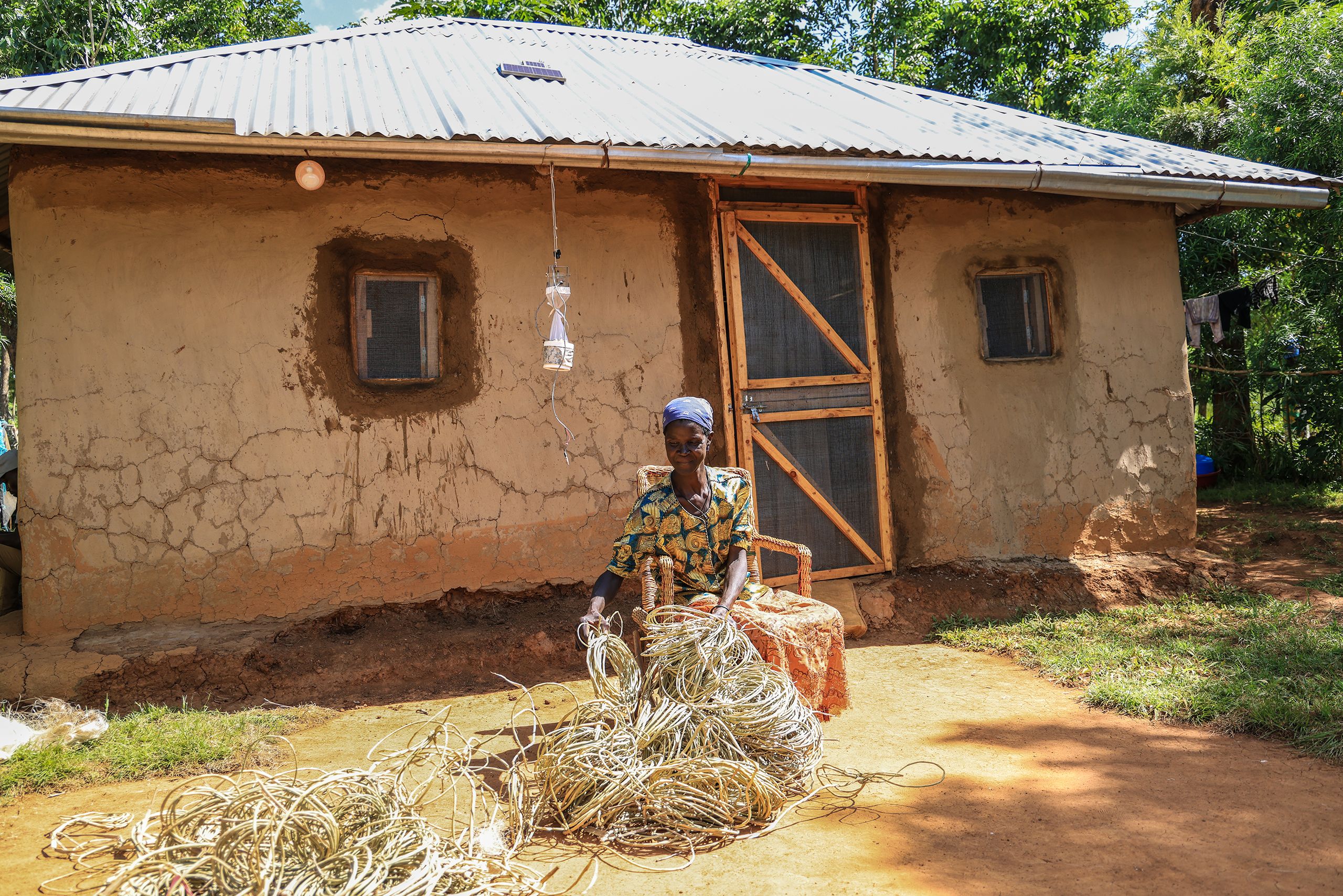
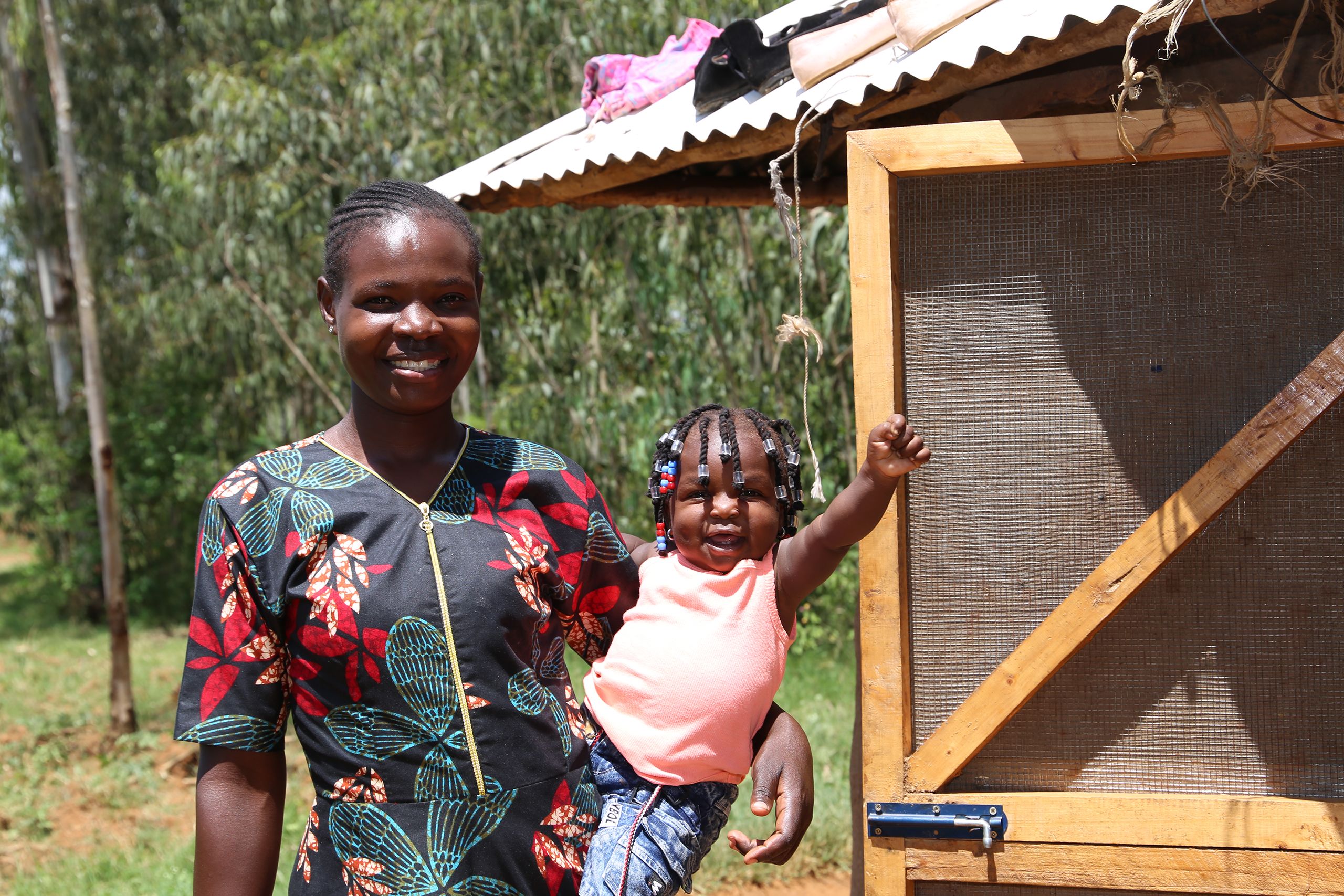





Habitat and researchers from the Kenya Medical Research Institute, or KEMRI, a key partner in the Terwilliger Center’s healthy housing work, tested the winning design challenge solution and found that huts modified with screened doors, windows and eaves significantly reduced the number of mosquitoes inside compared with unmodified huts.
The encouraging results inspired additional funding from SeaFreight Labs, an innovative consultancy group that also supported the design challenge. In March 2023, the Terwilliger Center and KEMRI partnered to further test malaria prevention and thermal cooling solutions in a pilot trial of 40 homes in Siaya, Kenya, a rural community in the country’s malaria-endemic region.
Ten control homes were unmodified, and the other 30 received screening and other modifications to address indoor temperature and mosquito entry. By subdividing the modified homes into three groups with variations of the modifications, the researchers better understand the impact and benefit of specific interventions.
The research revealed that the number of malaria-transmitting mosquitoes was 54% lower in the screened homes. Study participants who received roofing and ventilation upgrades also felt cooler in their homes. Margaret, a homeowner whose iron roof was painted white to reflect heat as part of the pilot, says her church group now prefers to meet at her house because it’s cooler and more comfortable.
Jacob Simwero, Terwilliger Center construction practices specialist, says, “The goal is to eliminate malaria, so we need an integrated approach. If improved housing is added as one of the interventions alongside bed nets to control mosquitoes, then there’s going to be higher impact.”
A new US$2.5 million project funded by London-based Wellcome Trust will help the Terwilliger Center and KEMRI further study their malaria-proofing and thermal comfort interventions in Kenya. The four-year project, which begins in fiscal year 2024, will improve 300 homes in hot and humid zones across the country to measure the impact on the residents’ health.
See the Terwilliger Center's impact and sponsors for FY2023.
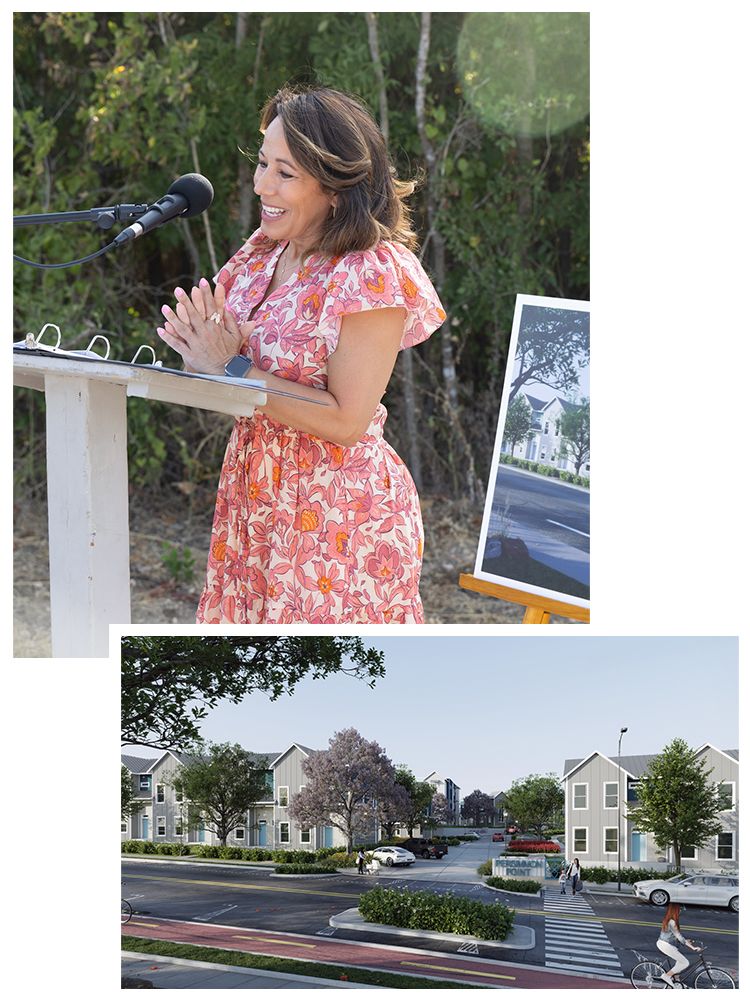
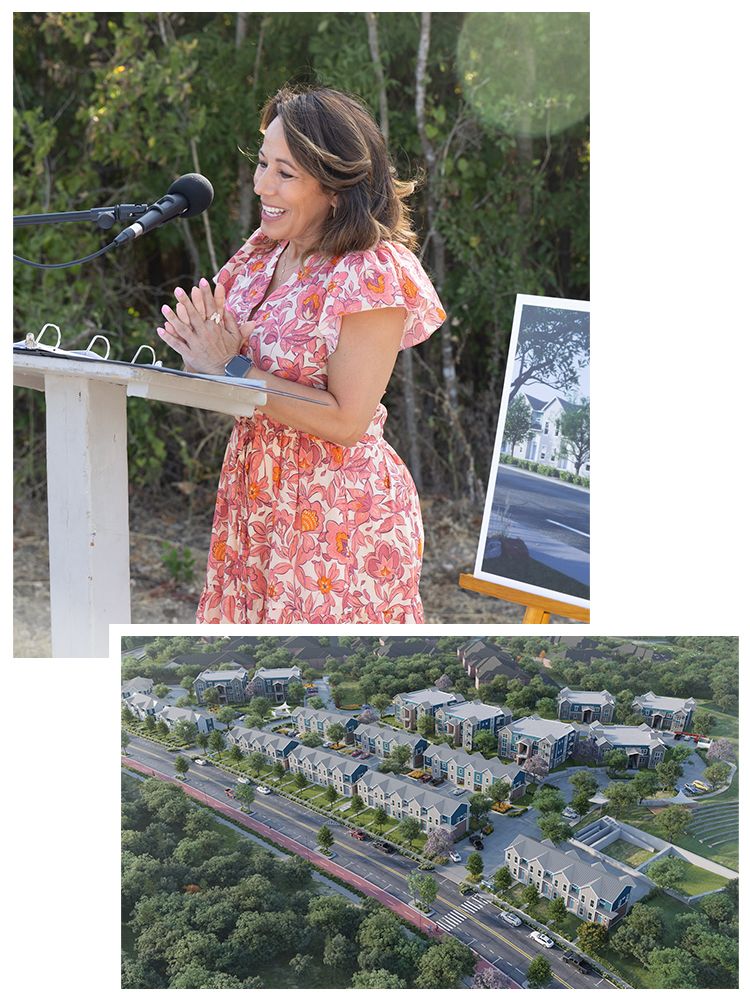
Advocating for government funding for affordable housing in Texas
Austin Habitat and several partner organizations played a critical role in passing a housing bond voted on in the November 2022 election that secured US$350 million for affordable housing in Austin, Texas. The affordable housing bond is the city’s largest bond of its kind and sets aside government funding for developers to acquire land, build affordable homes and rental properties, and repair and rehabilitate existing homes.
The bond will help scale affordable housing construction amid Austin’s rapid population growth and subsequent spike in housing costs. The median price of a single-family house in Austin more than doubled over the last 10 years, jumping from US$216,000 in 2011 to US$536,000 in 2021. Wayne Gerami, Austin Habitat’s chief operating officer, says the shortage of affordable housing has made it “increasingly difficult for longtime Austinites to afford to live in the city they grew up in.”
As the city’s growth continued to strain the housing market, advocates began exploring options for expanding the affordable housing stock.
“If we can build more affordable housing, it’ll take away the pressure from the existing housing inventory. We needed to advocate in ways that make it easier for everybody to build.”
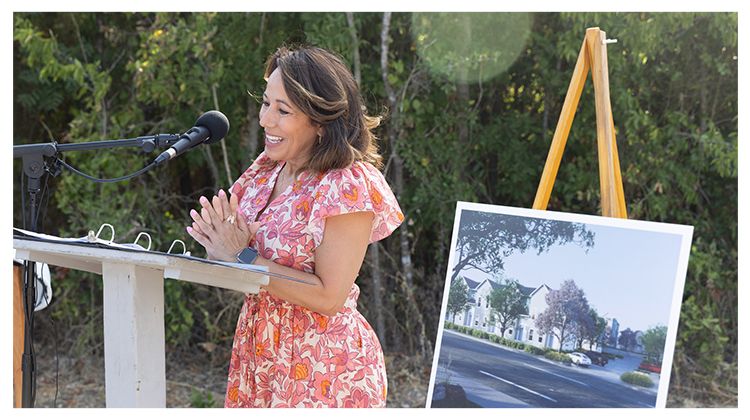
In 2022, Austin Habitat and a coalition of local housing organizations launched a campaign to pass Proposition A, an affordable housing bond that would provide much-needed funding to multiply affordable homeownership and rental opportunities in Austin. The advocacy efforts built on the coalition’s past success in rallying voters to approve a US$250 million affordable housing bond in 2018.
The coalition ran a poll to gauge voter interest, organized rallies, hosted events to encourage public activism, and met with city councilmembers and candidates running for office to promote housing as a nonpartisan issue. Proposition A passed overwhelmingly on Election Day, with 71% of voters casting ballots in favor of the new housing bond. “Everything we’ve done successfully to advocate for more housing in Austin has been because of the coalition,” Greg says.
Austin Habitat has tapped into the fund to advance affordable homebuilding through projects like their new Persimmon Point community. Persimmon Point, which broke ground in summer 2023, will be home to 126 families upon completion, making it Austin Habitat’s largest development to date. The city has committed more than US$11 million to the project, with some of the funding coming from the recent affordable housing bond.
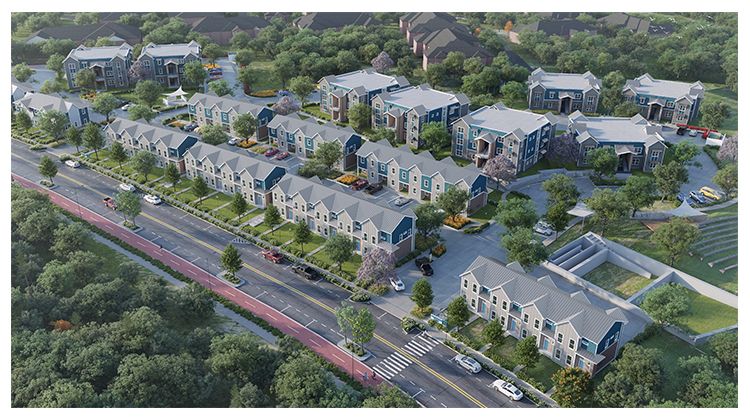
Austin Habitat’s advocacy win is representative of the policy success Habitat is driving through Cost of Home, our five-year U.S. home affordability advocacy campaign. Since launching the campaign in 2019, local and state Habitat organizations have helped influence more than 300 policies, unlocking more than US$21 billion in government funding and increased home affordability for an estimated 6.6 million people.
See the Cost of Home campaign's impact and partners in FY2023.
Promoting equitable access to adequate housing in informal settlements
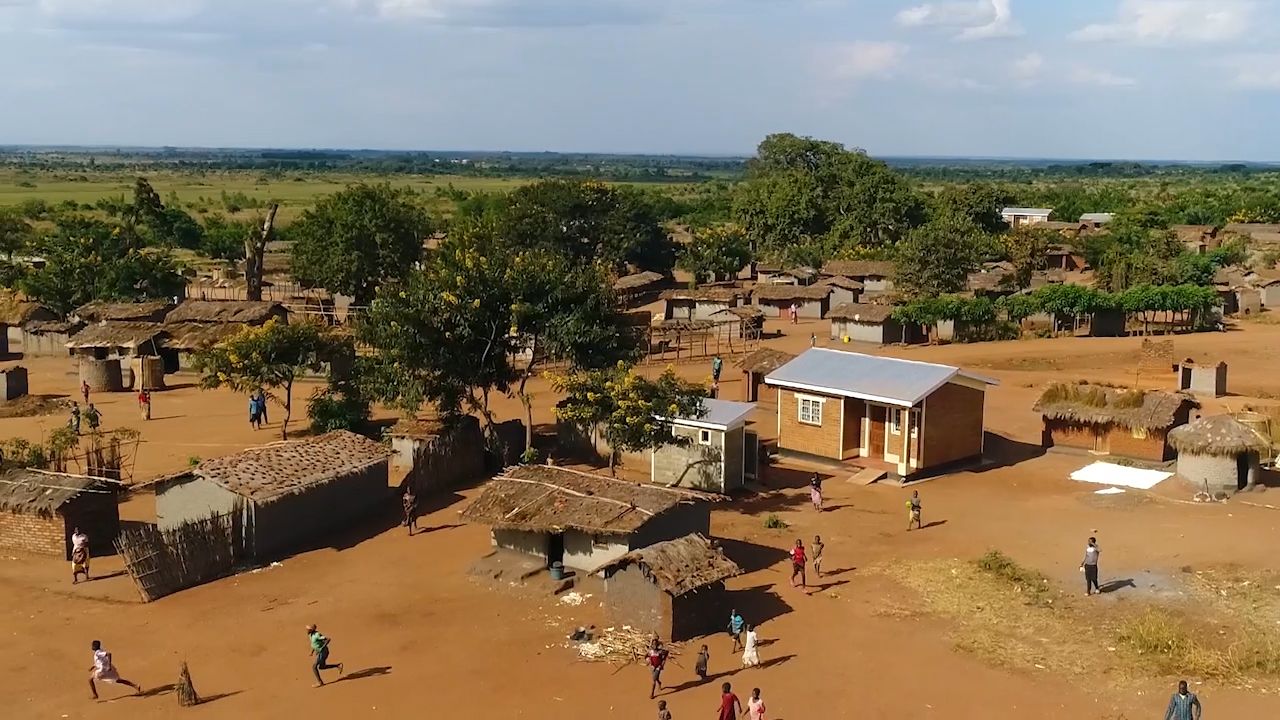
In May 2023, Habitat for Humanity launched Home Equals, our five-year global advocacy campaign that aims to help 15 million residents living in informal settlements improve the places they call home. The campaign is advancing equitable access to adequate housing in informal settlements through policy and system changes focused on empowered participation, basic services, climate resilience and tenure security.
The lack of access to decent shelter and essential services in informal settlements creates disadvantages that perpetuate poverty, limit educational and employment opportunities, and keep residents on an unequal playing field.
People living in informal settlements are already leading efforts to improve their communities, but grassroots approaches can only go so far. We’re working closely with communities, governments and partners to advocate for systemwide policies that foster fair and decent living conditions in informal settlements. Together, we can improve health and education, promote gender equity, and support economic growth for everyone.
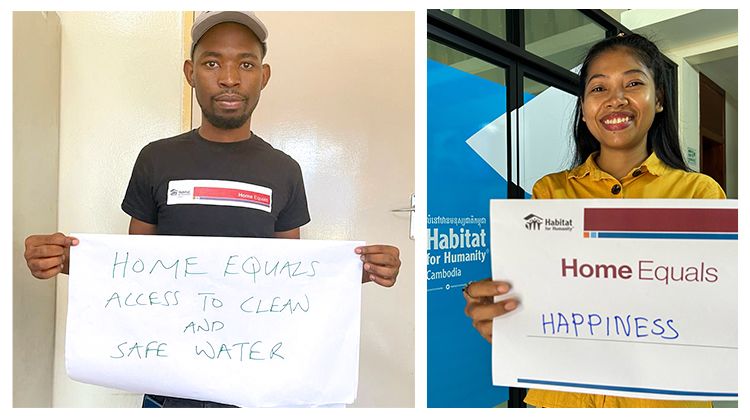
Passing a new disaster risk management law in Malawi
Habitat Malawi played a key role in championing a national disaster risk management law that has the potential to impact more than 659,000 people. This is just one example of the policy changes Habitat seeks to advance through Home Equals.
In Malawi, tropical cyclones have increased in frequency and intensity in recent years, presenting a major threat to those living in substandard housing in disaster-prone areas. Habitat Malawi advocated for the passing of a refreshed disaster risk management bill to help vulnerable communities better prepare for and recover from disasters through climate-resilient housing.
“We would wait for disasters to come, and then we would respond,” says Chrispin Chavula, Habitat Malawi’s advocacy and communications coordinator. “And even then, the existing act failed to allocate adequate resources to implement disaster risk management plans.” Lawmakers drafted a new disaster risk management bill in 2019 to repeal an outdated law from 1991, but the bill was deprioritized and never made it to a vote.
In June 2022, through pre-launch activities of their Home Equals advocacy campaign, Habitat Malawi mobilized support for the bill. They built momentum within the Malawi Parliament and Ministry of Justice and formed a coalition of civil society organizations, academia and media.
Cyclone Freddy, which brought deadly flooding to Malawi in February 2023, made the passage of the bill even more pressing. One month after Freddy claimed more than 1,000 lives in the country and displaced more than 500,000 people from their homes, the Malawi Parliament voted to pass the Disaster Risk Management Bill. The president signed the bill into law in June 2023.
The law establishes rules and regulations for safer housing construction guidelines and the formation of a trust fund to finance disaster risk and recovery activities. It also ensures a strong coordination structure for disaster risk management. The government can also now hold landlords and developers accountable for building in low-lying, high-risk areas. Chrispin says the improved building standards and disaster recovery efforts will significantly help residents in informal settlements build resiliency in the face of disasters.
Unlocking the potential of informal settlements
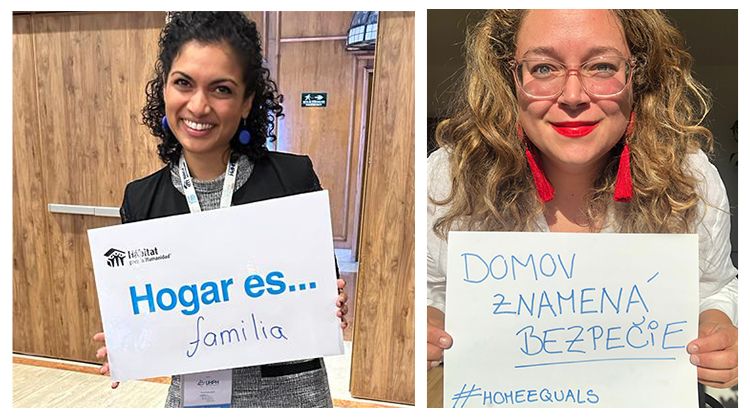
Whether it’s driving policy change by improving climate resiliency in Malawi, increasing civic engagement in Cambodia or achieving tenure security in Brazil, Habitat partners with communities around the world through the Home Equals campaign to create positive change. With fewer barriers in their way, people living in informal settlements can unleash their full potential.
Together, we are changing the equation so that for people living in informal settlements, home equals health. Home equals safety. Home equals security. And home equals the opportunity for a better future.
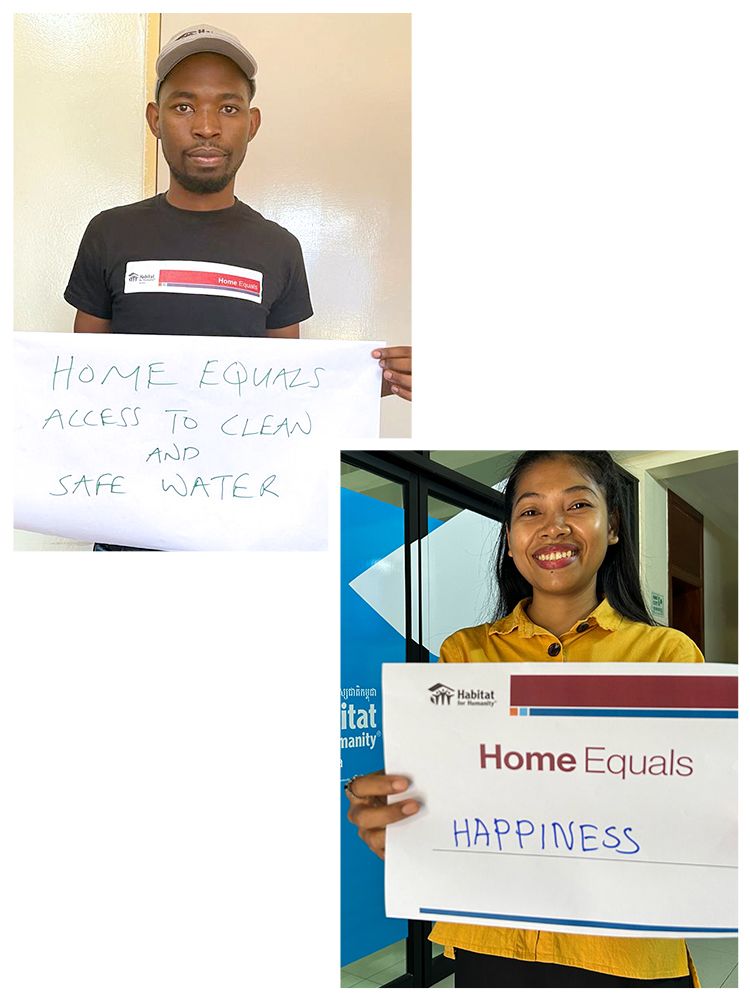
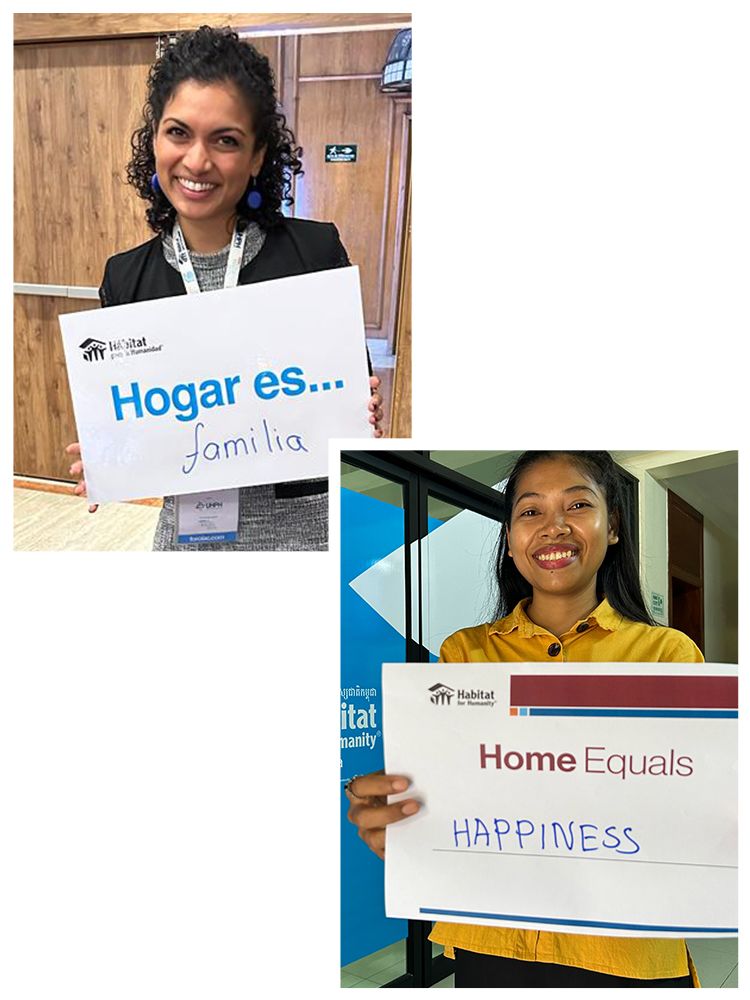
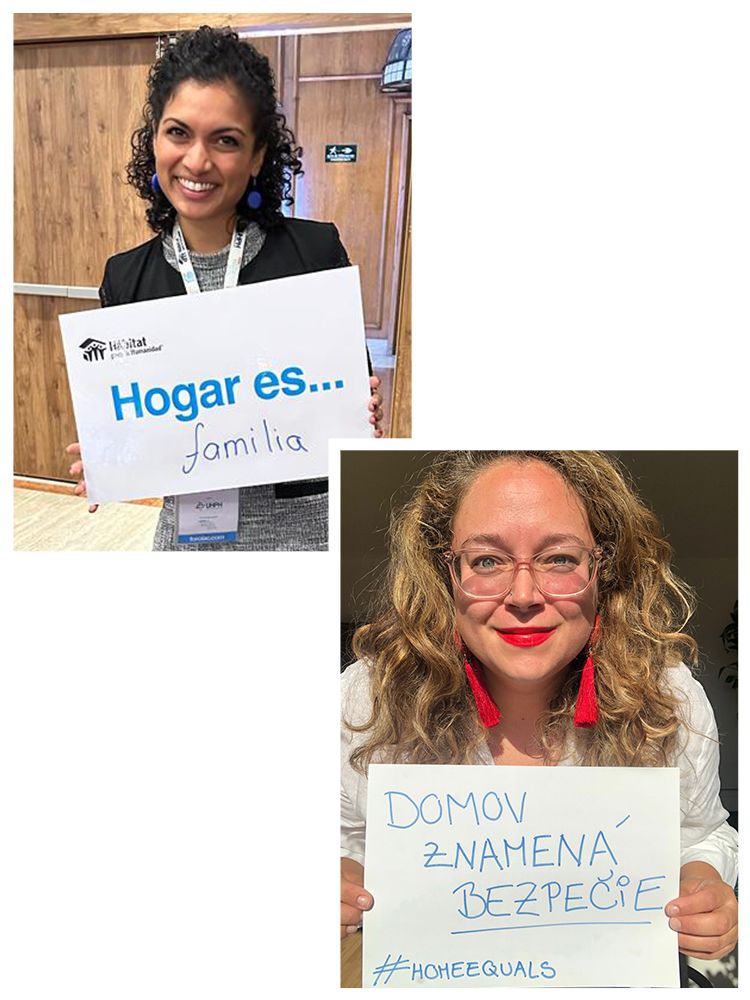
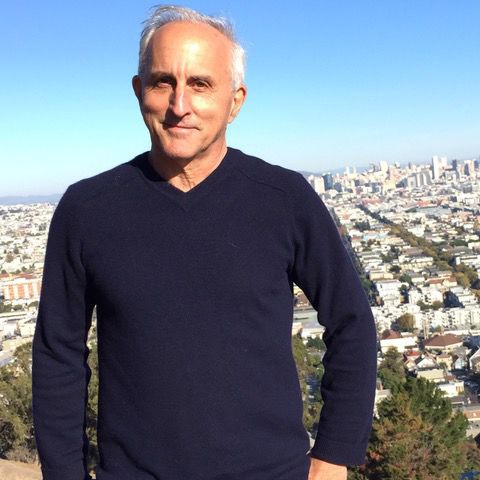
“We’re believers in Habitat’s work, and it’s a privilege to volunteer with them in this way. Habitat is one of the few groups that can bring considerable resources beyond the initial response to natural disasters. Volunteering with Disaster Corps has only strengthened my belief in Habitat’s role in disaster response and rebuilding. Recovering from a disaster is a long and hard road, and Habitat travels it well.”
Tony Safford is a Disaster Corps volunteer supporting the disaster preparedness, response and recovery efforts of several Habitat affiliates in California. His work as a volunteer field coordinator helps Habitat affiliates build capacity and coordinate responses to environmental emergencies.
Building a brighter future with Habitat
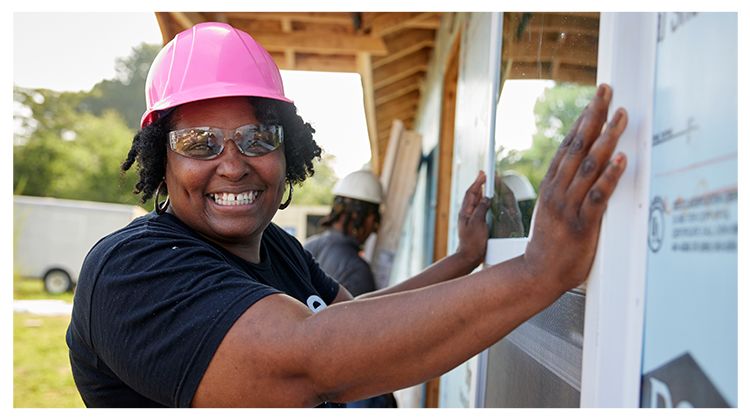
Marsha faced more than two decades of housing instability, but the military veteran and single mother never lost sight of her goal to become a homeowner. In 2023, she moved into her quiet, four-bedroom Habitat home in Lovejoy, Georgia. “It’s life-changing,” Marsha says. “I always wanted to live in a cul-de-sac, and now I live in a cul-de-sac. My kids are very proud that I hung in there, that I didn’t give up.”
Marsha joined the United States Army out of high school. After six years of service, she retired from the military in 1995 to start her family. A series of personal challenges quickly changed everything for Marsha. “Before I knew it, my life just turned into survival mode. It was a whirlwind,” she says.
She struggled to find a safe and decent place to live for herself and young family. Marsha and her kids experienced homelessness for a few years, but she eventually joined a subsidized housing program where she could focus on improving her financial well-being. Marsha took advantage of her newfound housing stability and advanced to higher-paying jobs, improved her credit and strengthened her savings. She continued to inch closer to her dream of homeownership.
The same week she started her new job as a bus operator for Atlanta’s public transit agency, she was accepted into Southern Crescent Habitat’s homeownership program. The Georgia affiliate provided Marsha with the information and tools needed to navigate the homebuying process.
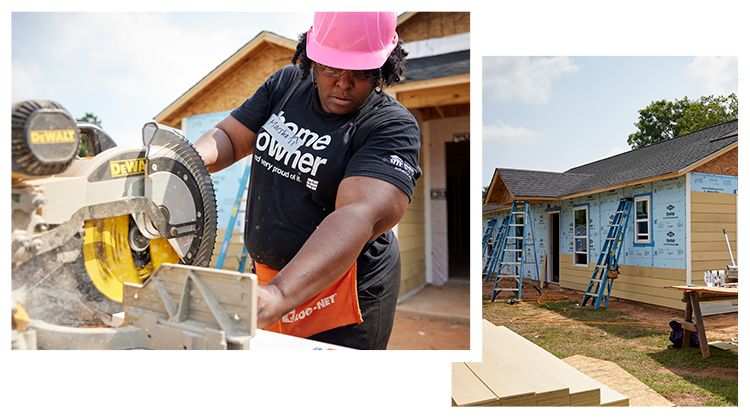
“I’m thankful that as a first-time homebuyer, I got to go through this with Habitat. They were committed to making sure I understood every part of the process. My oldest son is now purchasing a home, and I was able to walk him through it. My kids are not going to have to go through what I went through. That’s just joy.”
Marsha and her two youngest children, 18-year-old twins Elizabeth and Elisha, live in Southern Crescent Habitat’s Hannah Springs community, a lively and thriving neighborhood. “I love that I’m part of a community and that all my neighbors went through the Habitat program,” she says. “They all live with the same pride I have.”
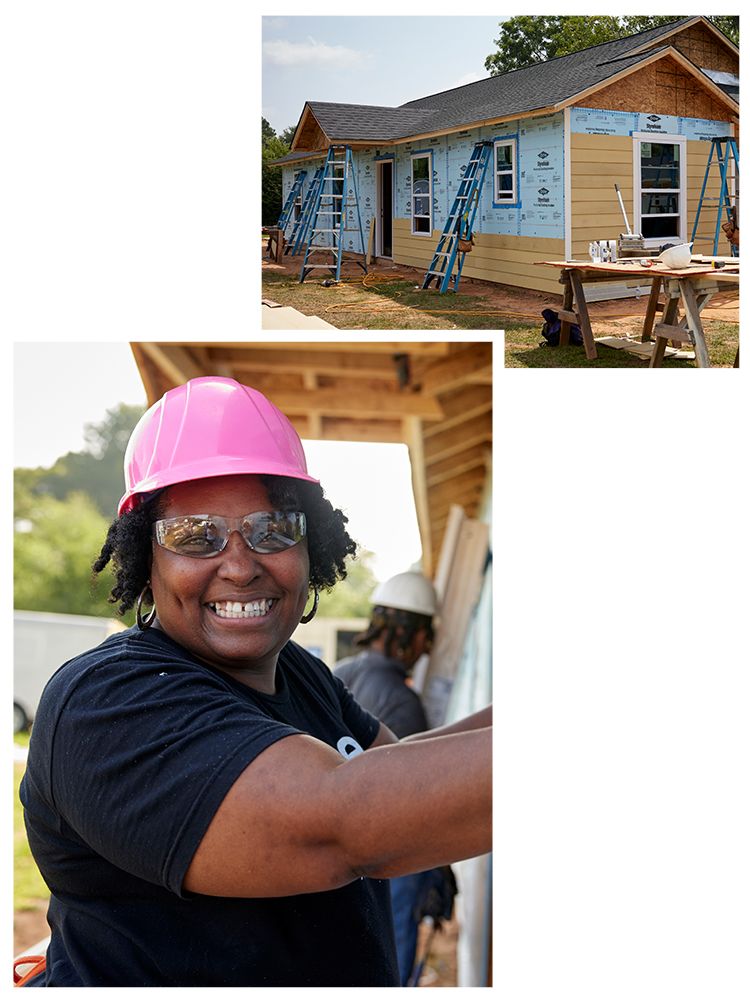
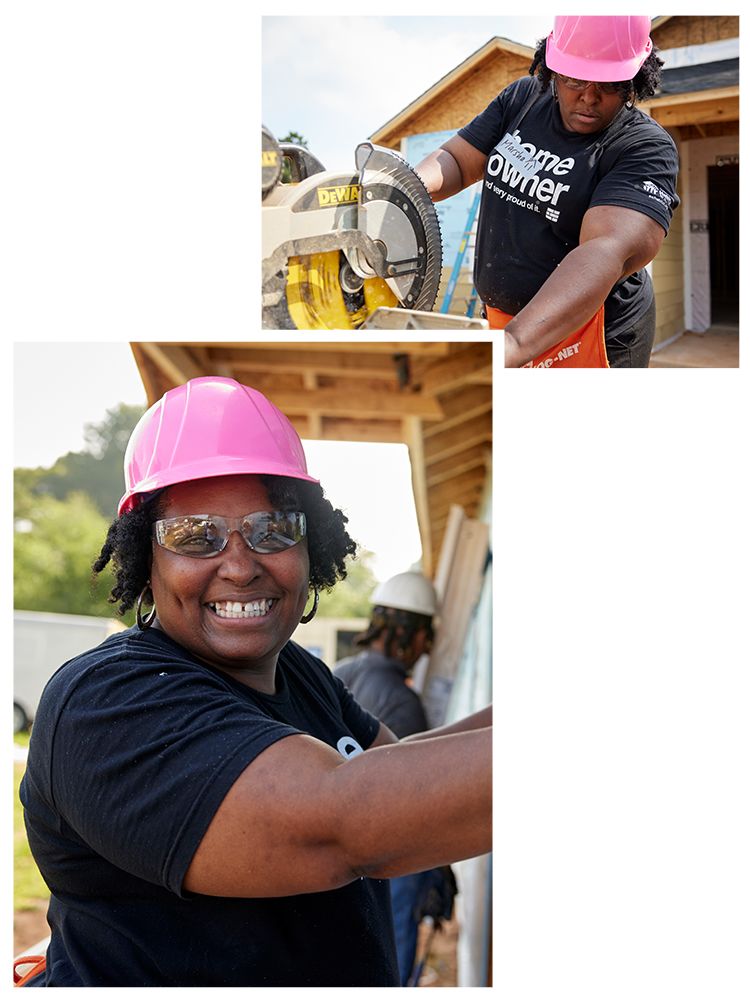
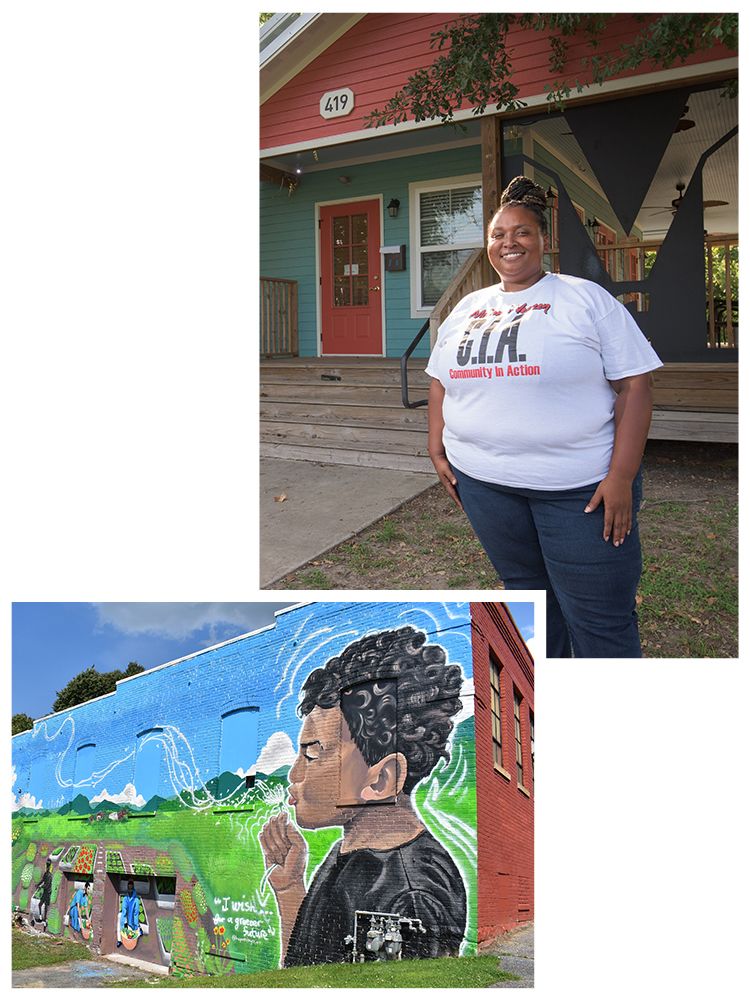
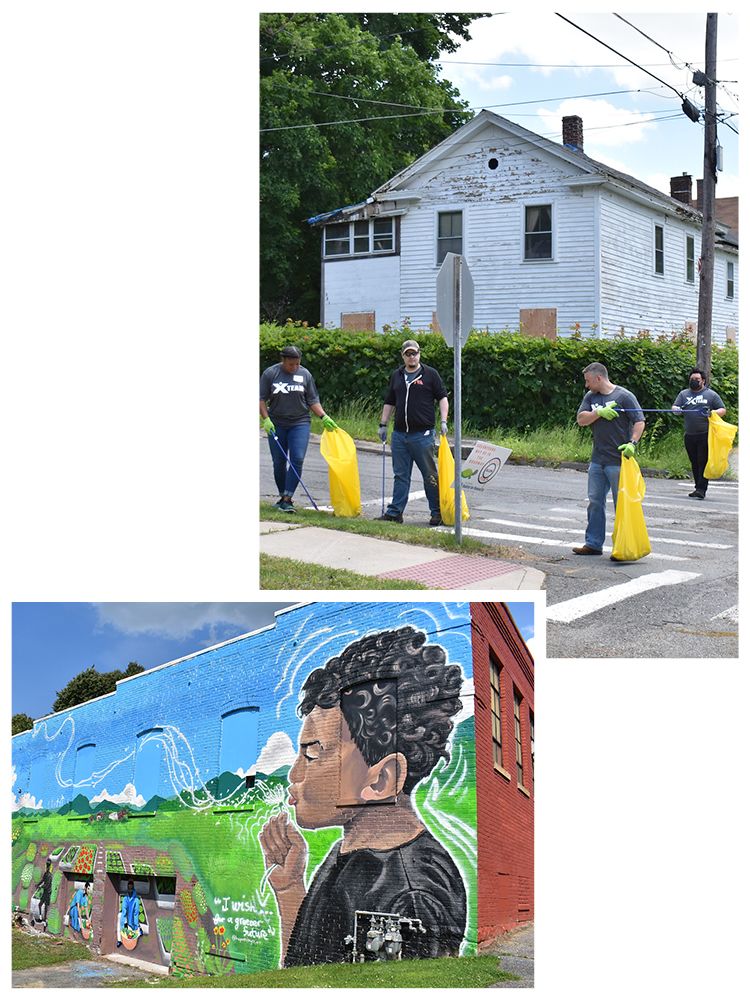
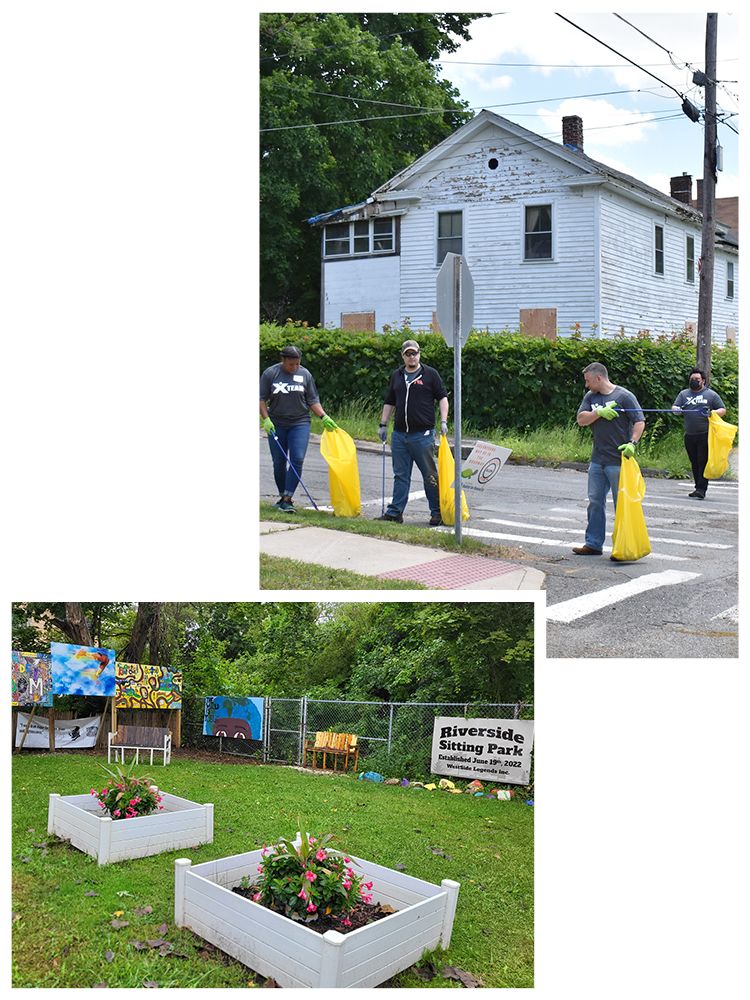
Residents leading neighborhood revitalization
A cohort of 10 Habitat for Humanity affiliates working in under-resourced communities across the U.S. has implemented and tested our Quality of Life Framework through the past five years. The framework promotes resident-led revitalization and serves as a customizable tool for residents and partners to identify community challenges and build on strengths in ways that lead to changes that foster equitable, livable and resilient neighborhoods.
The participating communities varied in geography and project focus, but all used Habitat’s Quality of Life Framework to help residents improve opportunity in their neighborhoods. Two of those neighborhoods — one in Louisiana, the other in Massachusetts — showcase how the framework is applied and adapted according to the specific priorities in each community.
Spearheading revitalization efforts in Louisiana
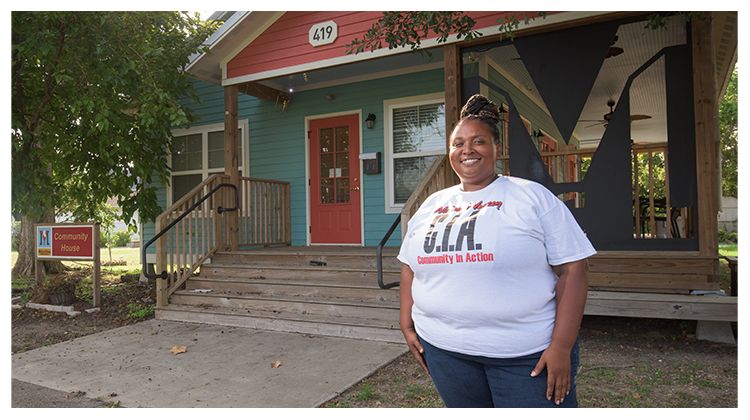
Residents in Lafayette, Louisiana’s McComb-Veazey neighborhood strive to preserve and celebrate the community’s rich Black and French Creole heritage. The McComb-Veazey Neighborhood Coterie, a coalition of community residents, formed more than a decade ago to identify local priorities and spur neighborhood improvements in areas like access to decent housing, parks and community spaces.
Lafayette Habitat partnered with the coterie as part of the Quality of Life pilot to help the community realize its vision. The affiliate centered much of its homebuilding efforts in McComb-Veazey, building more than 40 affordable homes alongside homeowners and community members. In partnership with Habitat and other local organizations, residents also transformed a blighted property into a neighborhood gathering space called the Community House and engaged in beautification projects like painting murals and planting trees. Additionally, the coterie developed a youth entrepreneurship academy where budding entrepreneurs learn how to develop and pitch business ideas.
Tina Bingham, executive director of the McComb-Veazey Neighborhood Coterie and Lafayette Habitat’s community development director, says, “The Quality of Life Framework provided a way for us to easily explain how the quality of life in our community can be improved by us all doing our parts and bringing our skills and knowledge to the community.”
Earning trust and sparking change in Massachusetts
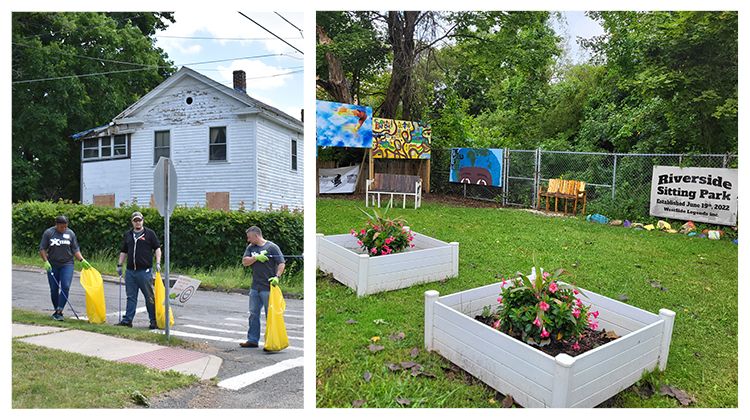
In Pittsfield, Massachusetts, Central Berkshire Habitat used the same Quality of Life Framework to work with residents in the city’s Westside neighborhood, a post-industrial community that has experienced high rates of unemployment since the closure of a major manufacturer in the 1990s.
Central Berkshire Habitat worked with Berkshire Bridges, the local resident-led coalition, to better understand the community’s needs and help spark changes in Westside. The community came together to install new playground equipment, participate in neighborhood cleanup days and successfully advocate for new sidewalks to improve pedestrian safety. Central Berkshire Habitat established a workforce training program to offer construction trainees practical homebuilding experience in Westside.
The affiliate also commissioned a local artist to paint a mural depicting the hopes and dreams of Westside residents. “Residents are the ones closest to the solution,” says Carolyn Valli, Central Berkshire Habitat’s CEO. “We need to listen to them. The shift occurs when people start believing that their voices will be heard.”
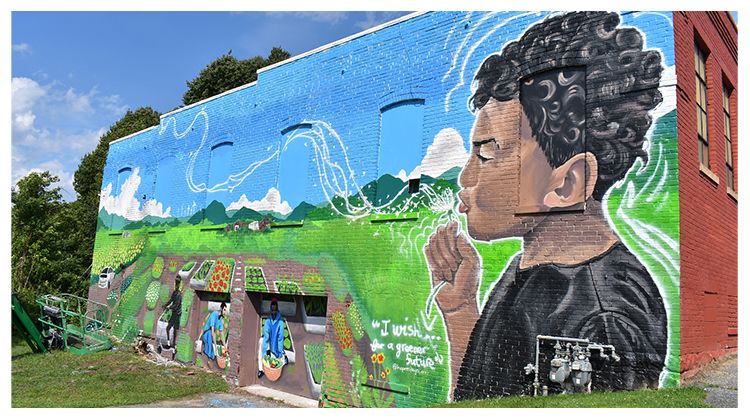
Reaching more communities with our neighborhood revitalization approach
“Based on the success of this pilot, we’re going to continue integrating principle-based approaches that center equity in our efforts,” says Tawkiyah Jordan, Habitat for Humanity International’s vice president of housing and community strategy. “We’re building on what we learned by focusing on inclusive and participatory approaches, anti-displacement efforts, justice-oriented solutions and market-based strategies.”
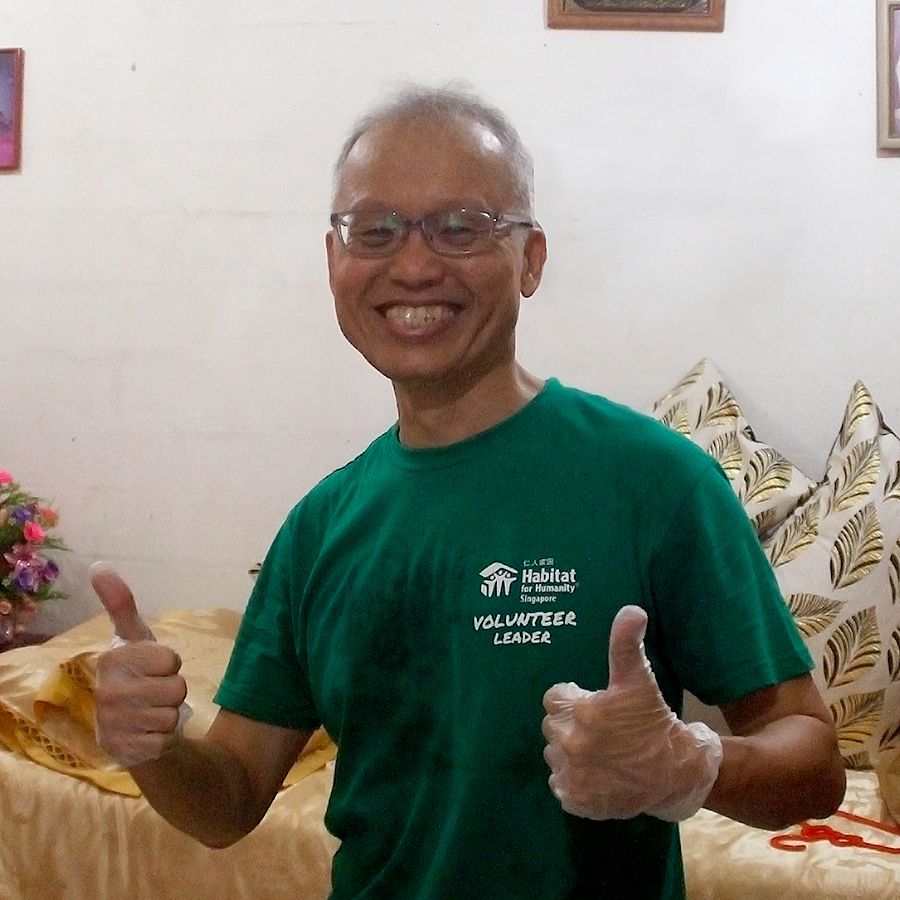
“I strongly believe in Habitat’s vision of a world where everyone has a decent place to live. There are many people out there who need our support. My simple hope is that residents realize we care about them and that people in Singapore have a safe place to live in.”
Wee Jin is a regular volunteer with Habitat Singapore. In 2023, he served as a volunteer group leader with Habitat Singapore’s A Brush with Kindness.
